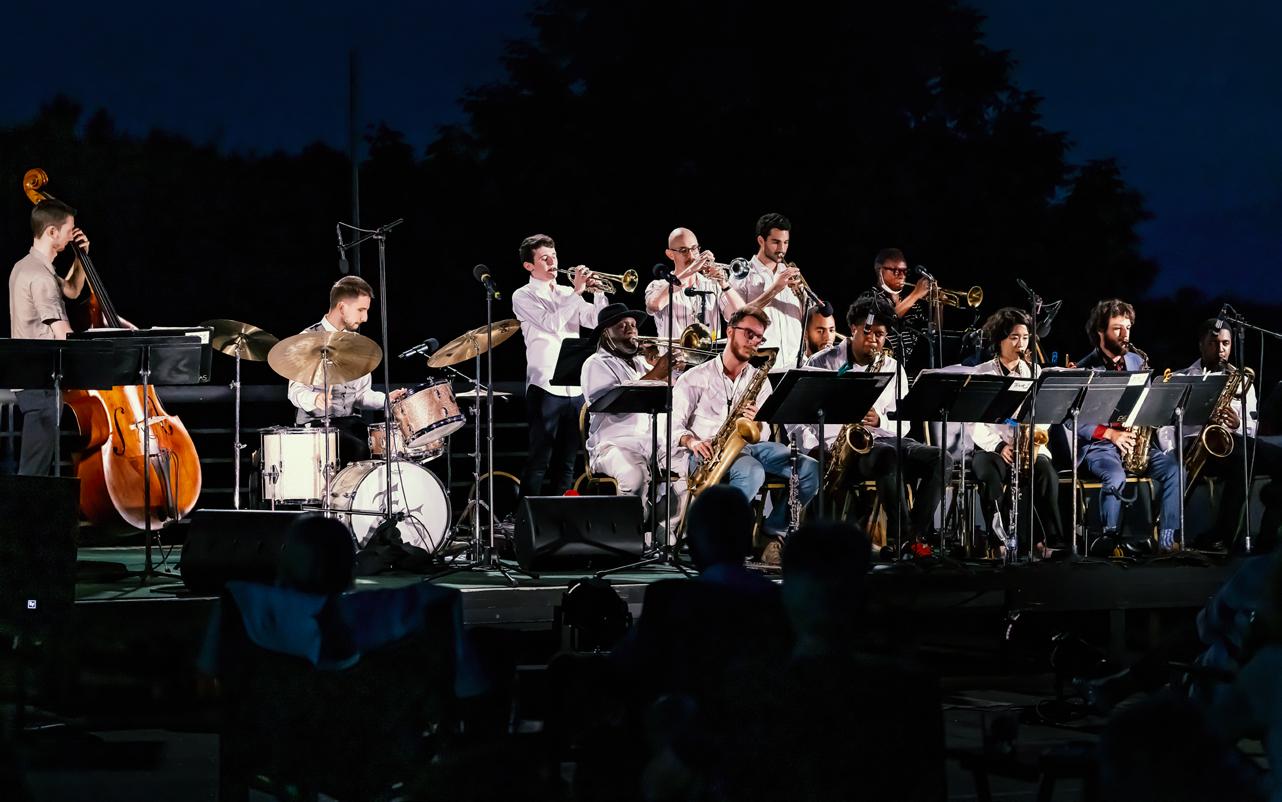
THE MAGAZINE OF THE NEW JERSEY JAZZ SOCIETY JULY/AUGUST 2023 VOLUME 51 ISSUE 07 JerseyJazz
EVAN SHERMAN BIG BAND
JAZZ ON THE BACK DECK
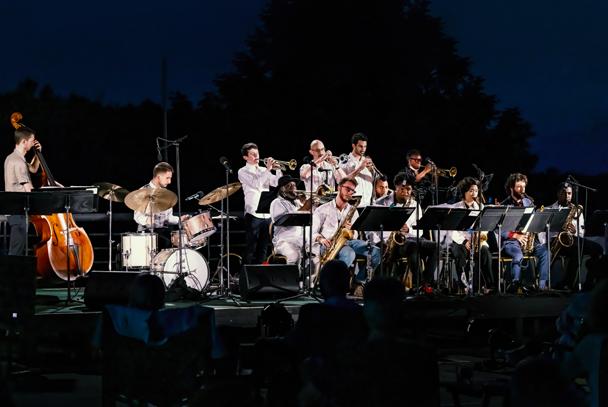
02 JULY/AUGUST 2023 JERSEY JAZZ NJJS.ORG
ISSUE ARTICLES/REVIEWS 08 Jazz History: Johnny Hartman 14 Jazz at William Paterson: Art Baron’s Duke’s Men 19 Jazz on the Back Deck: Evan Sherman Big Band 22 Vincent Herring’s Something Else! 26 Rising Stars: NYO Jazz, JHK All-Stars 31 Jazz History: Tal Farlow 36 Book Review: Kansas City Jazz 38 Other Views 43 Big Band in the Sky COLUMNS 03 All That’s Jazz 05 Editor’s Choice 35 Dan’s Den ON THE COVER _ Evan Sherman’s Big Band in August 2022 at the Morris Museum. Photo by Jack Grassa
IN THIS
ALL THAT’S JAZZ
BY CYDNEY HALPIN
Summer is in full swing, and I’ve just returned from a fabulous business/pleasure trip to Dublin, Paris, and Copenhagen where … music is indeed the universal language!
My sojourn started in Dublin with the “Delta Blues Project” supporting the extraordinary work of arranger, conductor, and recording producer David O’Rourke, and the incredible corroboration between Clarksdale Mississippi’s Ground Zero Blues Club, Oscar winning actor Morgan Freeman, leading American jazz and blues musicians (drummer Lewis Nash, trumpeter Jeremy Pelt, pianist Caili O’Doherty, saxophonist Doug DeHays, guitarist/ singer Anthony “Big A” Sherrod, guitarist/singer Jacqueline “Jaxx” Nassar) and the RTÉ Concert Orchestra, which presented the project as part

of its 75th Anniversary Celebration programming. It was a sold-out event.
Congratulations to everyone associated with this incredible mash-up of art forms! I can’t wait to share more information about the documentary and recording … it’s a tour de force celebration of Americana indeed.
As if this entire project wasn’t enough of a gift, Lewis and Jeremy shared more of their greatness to a PACKED house at famed Arthur’s Pub/Blues & Jazz Club, where they— as per their website—“lite a turf fire everyday.” The group was indeed on fire. For this audience member, sharing “I’m with the band” never gets old.
A Saturday morning stroll in Copenhagen found me flipping through a bin of used records on the sidewalk outside of JAZZCUP—a CD/ record/book shop & cafe. Given that the sale of used CDs, records, and
books has been beneficial in supporting NJJS programming (thank you to all of you who have donated merchandise), I’m always curious to see what others are selling! I did the same thing in Dublin at Spindizz Records … although left empty handed.
As is my usual habit, I never look through a bin systematically, but rather prefer to pick a place at random, push open the stack, and see what “surprise” awaits my effort!
Imagine my delight when my endeavor produced the record Luis Russell 1929/1930 on ODÉON records. Given the cover art image was not of a pianist but of trombonist J.C. Higginbotham, my mind quickly questioned, “Louis Russell … Cat’s dad Luis Russell?” A quick flip to the back of the records liner notes found me reading,”Luis Russell est né le 5 août 1902 à Careening Cay, June petite
ile de Panama.” YES, this was a recording of singer Catherine Russell’s dad, and it was going home with me!
A step inside the shop to pay for my discovery had me encountering a very charming and intriguing shop with an intimate and inviting bar/ cafe, a well-maintained upright piano, shelves and bins stocked with well categorized merchandise, and Goren Friis, the jazz loving proprietor. One glance at my selection, and he shared with me that this record was ‘the one’ that got him hooked on jazz as a very young man. I shared with him that Luis’ daughter was a dear friend of mine, and the conversation launched into a joyous exchange of the recent release of Luis’ newly discovered recordings from the closet, At The Swing Cat’s Ball and Cat’s recordings—all of which he had! He further explained that he holds
03 JULY/AUGUST 2023 JERSEY JAZZ NJJS.ORG
ALL THAT’S JAZZ
in-store concerts in the afternoons because the ‘jazz audiences skew older’, that it was a pity that I was going to miss the Copenhagen Jazz Festival (believe me, I already felt the pain!). His programming receives grant money from the government, all musicians are paid the same union wage 2300 Kroner/$338 regardless of stature, their concert entrance fee is $15, and there is no house minimum—“although people drink!”
A $3 investment for the Russell record, exchange of business cards, gifts from Goren of their magazine/ catalog and their label’s latest compilation CD had me departing the shop feeling rich as Midas being a part of the universal fellowship of jazz. It really is a very special community.
Malheureusement, the timing of this trip left me experiencing mostly ‘dark’ jazz venues, as summer holidays were beginning, places were
gearing up for their festivals, summer presentations hadn’t yet commenced, and a last-minute invitation to participate in the midnight jam session at Paris’ Le Duc des Lombards found this very fatigued traveler—already in her jammies—saying “next time!”
A cab ride to Charles de Gualle airport presented me a driver whose radio was tuned to a jazz station.
When I shared with him that I was involved in the jazz world, and that my trip had been both business and pleasure with the genre, the often traffic laden and silent 45-minute trip was an animated testament to the power of jazz, and its ability to erase barriers and unite people of all walks, all over the world.
My trip was bookended by two grand pianos, one in the departure terminal at EWR and one in the departure terminal at CDG. Children and adults
alike are respectfully drawn to these pianos and the impromptu players are quite good. Classical, contemporary, jazz … viva la music.
The blessings keep coming and I’m so delighted to be one of the “friends” performing with Martin Pizzarelli & Friends on Thursday, July 13, 7:30PM, at the Morris Museum “Jazz on the Back Deck” summer series.
This is our third consecutive year participating, and we’re all looking forward to being part of this summer’s continued jazz legacy. This show is certain to be sold out, so get your tickets ASAP. Martin Pizzarelli—bass, Hyuna Park— piano, Linus Wyrsch—clarinet & tenor sax, David O’Rourke—guitar, Cydney Halpin—vocals. For tickets: morrismuseum.org or 973-971-3706. Bring a picnic, a chair and enjoy!
Other Back Deck jazz shows to enjoy this summer include Amani: A Celebration of Harry Belafonte, Thursday, July 27, and the Evan Sherman Big Band, Thursday, August 10 (our cover story). All shows are at 7:30PM.
J ersey Jazz LIVE! And our Rising Stars initiative will resume Sunday, October 8, 3 p.m., and will feature the Bill Mays Trio. We hope you’ll join us and start our second season off with a full house. Madison Community Arts Center, 10 Kings Road, Madison, NJ. $10 NJJS Members, $15 non members. FREE street parking available.
Here’ wishing all NJJS members, friends, musicians, colleagues, and devotees, a wonderful summer filled with much joy and marvelous jazz. A bientot!
04 JULY/AUGUST 2023 JERSEY JAZZ NJJS.ORG
BY SANFORD JOSEPHSON

The Improbable Bond Between Nina Simone and Rabbi Schlomo Carlebach
One of the most intriguing connections in musical history is that of vocalist Nina Simone and orthodox rabbi Schlomo Carlebach. The story was first told a decade ago in the musical play, Soul Doctor, which opened August 15, 2013, at Broadway’s Circle in the Square theater and ran for 66 performances. Now, 10 years later, a film version of Soul Doctor has been released, produced by Danny Wise and presented by Fathom Events and Lisa Simone, Nina’s daughter. On Tuesday, June 13, it was screened, for one night only, in more than 600 movie theaters.
Carlebach, who died in October 1994 at the age of 69, was the son of an orthodox rabbi who brought his family to the United States in 1939 after leaving Nazi Germany. From his father’s synagogue in Manhattan, Carlebach set up the first Hasidic outreach program in the U.S., but, by 1955, he began improvising on his outreach approach and became known as a “singing Rabbi.”
He was the star vocalist at rallies of the Student Struggle for Soviet Jewry (SSSJ), and his most famous song, “Am Yisrael Chai,” was composed for that protest movement. According to Oxford Bibliographies, “His major achievement (in his own eyes) was as ‘Rebbe of the Street-Corner.’ His potential constituency could be found
in any forlorn corner that he encountered. And since he traveled around the world sharing his utopian vision of love and peace, he assumed a unique role as a charismatic iconoclast rebbe.”
Fascinated by the unlikely relationship between Simone and Carlebach, I screened Soul Doctor, and one scene early on in the movie really stuck with me. I think this was supposed to be around 1957 when Carlebach wanders into a jazz club where Simone is performing. While considered somewhat of a maverick among his family and friends, he’s still observing orthodox customs, such as never touching a woman, not his wife.
Simone, portrayed by Broadway actress Nya, says, “I’m Nina, Nina Simone. What’s the matter? You don’t shake hands with colored people?”
Carlebach responds, “You’re the first woman I ever really sat and talked to.”
As the conversation progress-
es, she adds, “I wanted to be the first Black classical artist to play at Carnegie Hall. I couldn’t even get into a conservatory. I grew up in North Carolina where my grandmother was a slave.” Carlebach then tells her that he grew up in Vienna where life “was like a fairy tale until one day Hitler marched into town. A boy I used to play with was stabbed while the police stood there laughing.”
At that moment, I got it, how these two very different individuals could have related to each other and created a bond that apparently flourished for around eight years. My purpose in writing this column is not to review the movie – parts of it were wonderful, parts were a little slow. But we should celebrate this relationship.
As Lisa Simone said in a video press conference, it represents “joy, inspiration, the power of community. They influenced and inspired each other.”
05 JULY/AUGUST 2023 JERSEY JAZZ NJJS.ORG
EDITOR’S CHOICE
Founded in 1972, The New Jersey Jazz Society has diligently maintained its mission to promote and preserve America’s great art form—jazz. To accomplish our mission, we produce a monthly magazine, Jersey Jazz ; sponsor live jazz events; and provide scholarships to New Jersey college students studying jazz. Through our outreach program Generations of Jazz, we provide interactive programs focused on the history of jazz. The Society is run by a board of directors who meet monthly to conduct Society business. NJJS membership is comprised of jazz devotees from all parts of the state, the country and the world.
MEMBER BENEFITS
You become an integral part of the NJJS community, and the history and future of jazz
Access to 11 Digital Issues of our Award Winning Jersey Jazz Magazine
— Featuring Articles, Interviews, Reviews, Events and More
Discounts to our Jersey Jazz
LIVE! Sunday Concerts
Discounts at NJJS Sponsored Concerts & Events.
MUSICIAN MEMBERS
FREE Listing on NJJS.org “Musicians
List” with Individual Website Link
FREE Gig Advertising in our Monthly eBlast
THE RECORD BIN
Visit www.njjs.org or email info@njjs.org for more information on our programs and services
A collection of CDs & LPs available at reduced prices at most NJJS concerts and events and through mail order www.njjs.org/Store
Family/Individual $45
(Family includes to 2 Adults and 2 children under 18 years of age)
Family/Individual 3-Year $115
Musician Member $45 / 3-Year $90 (one time only, renewal at standard basic membership level.)
Youth $15 - For people under 21 years of age. Date of Birth Required.
Give-A-Gift $25 - Members in good standing may purchase unlimited gift memberships.
Applies to New Memberships only.
Fan $75 - $99
Jazzer $100 - $249
Sideman $250 - $499
Bandleader $500+
Corporate Membership $1000
Members at Bandleader level and above and Corporate Memberships receive special benefits. Please contact Membership@njjs.org for details.
The New Jersey Jazz Society is qualified as a tax exempt cultural organization under section 501(c)(3) of the Internal Revenue Code, Federal ID 23-7229339. Your contribution is tax-deductible to the full extent allowed by law. For more Information or to join, visit www.njjs.org
06 JULY/AUGUST 2023 JERSEY JAZZ NJJS.ORG
ABOUT NJJS JOIN NJJS
Magazine of the New Jersey Jazz Society
VOLUME 51 • ISSUE 06
NJJS org
Jersey Jazz (ISSN 07405928) is published monthly for members of The New Jersey Jazz Society
382 Springfield Ave., Suite 217, Summit, NJ 07901 973-229-0543 • info@njjs.org
Membership fee is $45/year.
All material in Jersey Jazz, except where another copyright holder is explicitly acknowledged, is copyright ©New Jersey Jazz Society 2020. All rights reserved. Use of this material is strictly prohibited without the written consent of the NJJS.
Editorial Staff
EDITOR
Sanford Josephson, editor@njjs.org
ART DIRECTOR
Michael Bessire, art@njjs.org
CONTRIBUTING PHOTO EDITOR
Mitchell Seidel, photo@njjs.org
CONTRIBUTING EDITORS
Rick Bogart, Noal Cohen, Bill Crow, Joe Lang, Dan Morgenstern, Jay Sweet
CONTRIBUTING PHOTOGRAPHERS
Ed Berger, Jack Grassa, Tony Graves, Adriana Mateo, Mitchell Seidel
WEBMASTER
Christine Vaindirlis
New Jersey Jazz Society, Officers 2021
PRESIDENT
Cydney Halpin, pres@njjs.org
EXECUTIVE VP vicepresident@njjs.org
TREASURER
Mike Katz, treasurer@njjs.org
VP, MEMBERSHIP membership@njjs.org
VP, PUBLICITY
Sanford Josephson, sanford.josephson@gmail.com
VP, MUSIC PROGRAMMING
Mitchell Seidel, music@njjs.org
RECORDING SECRETARY
Irene Miller
CO-FOUNDER
Jack Stine
Advertising
DIRECTOR OF ADVERTISING
Cydney Halpin, advertising@njjs.org
ADVERTISING RATES
Full Page: $135, Half Page: $90, 1/3 Page: $60, 1/4 Page: $30
For reservations, technical information and deadlines contact advertising@njjs.org or visit njjs.org/Magazine/Advertise .
Make payment at PayPal.com: payment@ njjs.org, or via check made payable to NJJS, 382 Springfield Ave., Suite 217, Summit, NJ 07901
IMMEDIATE PAST PRESIDENT
Mike Katz DIRECTORS
Jay Dougherty, Cynthia Feketie, Pete Grice, Carrie Jackson, Caryl Anne McBride, Robert McGee, James Pansulla, Stew Schiffer, Elliott Tyson, Jackie Wetcher
ADVISORS
Don Braden, Mariel Bildsten, Ted Chubb, Al Kuehn, Jason Olaine
07 JULY/AUGUST 2023 JERSEY JAZZ NJJS.ORG
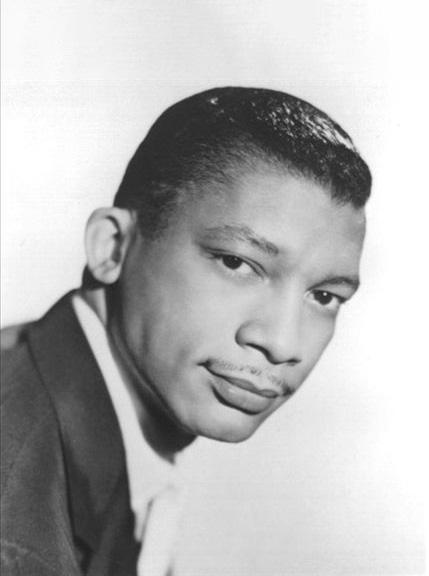
Johnny Hartman: An Intimate Interpreter of Love Songs
His Most Famous and Enduring Album Was Recorded in 1963 with the John Coltrane Quartet
BY NOAL COHEN
Johnny Hartman (1923-1983) was a crooner, a singer of ballads who could make material from the Great American Songbook his own. His rich baritone voice enveloped the listener in an aura of warmth and emotion. Although clearly from the same stylistic school as Nat King Cole, Billy Eckstine, and many other African American singers of his era, he eschewed both the blues and uptempo showstoppers. His preferred milieu was an intimate club, accompanied
by a piano trio, singing songs of love. Hartman’s career lasted 36 years during which he never really achieved fame but was consistently able to support himself and his family. As biographer Gregg Akkerman describes him in The Last Balladeer: The Johnny Hartman Story (Scarecrow Press: 2012), he was “a hardworking nice guy who had several tastes of success but never the complete meal.” While many of his recordings were clearly aimed at the pop market, his most memora-
08 JULY/AUGUST 2023 JERSEY JAZZ
JAZZ HISTORY
ble work was done in a jazz setting.
John Maurice Hartman was born in Houma, LA, on July 3, 1923, the fourth of six siblings. Later that year, the family moved north to Chicago where he began singing at the age of eight and attended Du Sable High School, studying with Walter Henri “Captain” Dyett, the long-time musical director who had taught and mentored many of Chicago’s most famous jazz musicians including Gene Ammons, Johnny Griffin, Clifford Jordan, Eddie Harris, and Julian Priester. After graduation in 1940, Hartman studied at Chicago Musical College (now part of Roosevelt University) while working as a coil winder.
Drafted into the Army in early 1943, he spent three years in Special Services, stationed in Virginia and the District of Columbia. It was during this period that his career as a professional singer began. In the service, he had the opportunity to
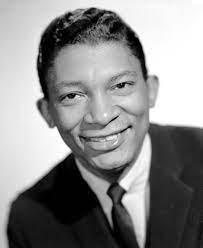
work with the great drummer Louie Bellson and others who would go on to significant musical careers. After discharge in 1946, Hartman attended Wilson College in Chicago on the G.I. Bill, studying business but also considering a career in music.
His breakthrough came in August 1946 when he won an amateur contest held at the El Grotto nightclub, in the Pershing Hotel, on Chicago’s South Side. Singing “My Funny Valentine,” Hartman scored an engagement at the club as well as positive coverage in the Chicago Defender, the city’s influential African-Ameri-
can newspaper which described him as “the new Chicago vocalist sensation.” He was also soon referred to as a “Bronze Sinatra.” Hartman’s very first recordings took place in February 1947 with the string orchestra of pianist Marl Young for the Sunbeam label. The two titles have never been reissued and are very hard to find.
Pianist and bandleader Earl Hines became an owner of El Grotto in 1947 and was sufficiently im-
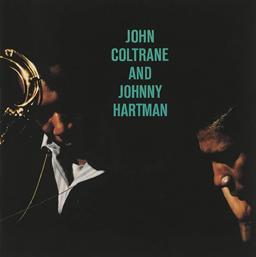
pressed with Hartman’s ability that he added the vocalist to his band, touring and recording four titles in November of that year for the MGM and Sunrise labels. The first Hartman recordings as a leader took place the same year for Regent Records in New York City, initially issued as 78 RPM singles and collected on an LP in 1957 entitled Johnny Hartman Sings…Just You, Just Me.
In 1948, Hartman began a 14-month tenure with the orchestra of trumpeter and bebop originator Dizzy Gillespie and relocated to New York City, living in the Theresa Hotel where he first met a hotel employee, La Fawn Gumbs, whom he would marry in 1950. They divorced in 1956.
The vocalist can be heard on many Gillespie recordings during the period 1948-1949, both from the RCA Victor studios and bootleg recordings of the band’s concerts. Hartman was the ballad singer featured
09 JULY/AUGUST 2023 JERSEY JAZZ NJJS.ORG
on “I Should Care,” “That Old Black Magic,” “You Go to My Head”, and “If Love Is Trouble.” But the more bop-oriented vocals were reserved for Joe Carroll and Dizzy himself.
A Hartman appearance on Arthur Godfrey’s Talent Scouts TV show singing “Lucky Old Sun” and an article in Metronome Magazine, both in late 1949, helped lay the groundwork for a career performing in well-known clubs such as New York’s Café Society. He did one recording session with the Erroll Garner Trio for Mercury Records and then, between 1950 and 1955, recorded material largely aimed at the pop market for the RCA Victor, Apollo, and Jubilee labels, none of
which generated much in the way of sales. As an immensely talented and good-looking Black crooner, he posed something of a marketing conundrum that was never really resolved.
In October and November of 1955, Hartman made his first recordings for a predominantly jazz-oriented label, Gus Wildi’s Bethlehem Records. With support from the great trumpeter Howard McGhee and the Ralph Sharon Trio, the LP Songs from the Heart was a fine exploration of choice pieces drawn from the Great American Song Book This was followed in 1956 by All of Me—The Debonair Mr. Hartman, featuring similar material and orchestras arranged and con-

ducted by Ernie Wilkins and Frank Hunter. Hartman also contributed three tracks to Bethlehem’s three-LP George Gershwin’s Porgy and Bess project, singing the role of Crown.
The years 1957-1962 were not
“ HARTMAN’S RENDERING OF BILLY STRAYHORN’S ‘LUSH LIFE’ IS ONE OF THE MOST ACCLAIMED BY A MALE VOCALIST. ”
very productive ones for Hartman although he met and married his second wife, dancer Theodora “Tedi” Boyd, in 1958. This union lasted until the singer’s death in 1983 and produced two daughters, Lori and Tedi. But during these five years, he only recorded one album, And I Thought About You, for the Roost label, backed by the Rudy Traylor Orchestra. Part of 1959 was spent living and performing in London and other locations in Europe.
While touring with Art Blakey
10 JULY/AUGUST 2023 JERSEY JAZZ NJJS.ORG
HISTORY
JAZZ
JAZZ HISTORY
and the Jazz Messengers in Japan in early 1963, Hartman was contacted by Bob Thiele of Impulse Records who suggested making an album with John Coltrane. At the time, the saxophonist was recording prolifically for the label and pushing the boundaries of jazz in new directions. On March 7, 1963, Hartman’s most famous and enduring album was recorded in the Englewood Cliffs, NJ, studio of Rudy Van Gelder. Intensely emotional and even sensual, John Coltrane and Johnny Hartman contains a bare 30 minutes of sheer vocal and instrumental magic woven by the vocalist and Coltrane’s quartet including pianist McCoy Tyner, bassist Jimmy Garrison, and drummer Elvin Jones. Essential to the success of the album was the superb selection of material, all ballads that were not overdone and perfect for stimulating the participants to attain the highest artistic level. Hartman’s rendering of Billy
Strayhorn’s “Lush Life” is one of the most acclaimed by a male vocalist. On his deathbed in 1967, the composer told his friend Hartman, “Johnny you did this song exactly how I meant it.”
Like Miles Davis’ Kind of Blue and Dave Brubeck’s Time Out, the album John Coltrane and Johnny Hartman has remained in print since its initial release, reissued numerous times all over the world. It received two Grammy Hall of Fame Awards, one in 1999 for the performance of “Lush Life” and another in 2012 for the album. It is included in Will Friedwald’s 2017 book, The Great Jazz and Pop Vocal Albums (Pantheon: 2017). Hartman made two other excellent albums for Impulse, I Just Dropped by to Say Hello (1963) and The Voice That Is! (1964), but neither achieved the lofty status of the Coltrane album. Sadly, the two masters would not record together again.
Hartman was never able to exploit the success of the Coltrane col-


laboration in a way that led to a major career breakthrough. Between 1965 and his death in 1983, he recorded a dozen albums for various labels in the USA, Canada, and Japan, but none garnered much attention during his lifetime. Some were aimed at the pop market and included material in vogue at the time but outside of the jazz genre. When work was slow in
the 1970s, Hartman took acting lessons and appeared in The Duplex at Lincoln Center’s Repertory Theater and in the TV series Emergency.
Other albums involved jazz instrumentalists of note including saxophonists George Coleman (Today, which appeared on the Cashbox Album Charts for three weeks in 1972) and Jimmy Heath (I’ve Been There, 1973), trumpeter Tarumasa Hino (Hartman Meets Hino, 1972), pianist Roland Hanna (Live at Sometime, 1977) and pianist/songwriter Loonis McGlohon (Thank You for Everything, 1976). He also made a cameo appearance on Clark Terry’s Ain’t Misbehavin’ (1979).
One album worthy of mention is Once in Every Life recorded in August of 1980 for the Chicago-based Bee Hive label which brought Hartman posthumous fame when Clint Eastwood included four tracks in the soundtrack of his 1995 award winning movie The Bridges of Madison
11 JULY/AUGUST 2023 JERSEY JAZZ NJJS.ORG
County. The ensemble accompanying Hartman on this album was one of the most compatible and supportive of his career: Joe Wilder on trumpet and flugelhorn, Frank Wess on tenor saxophone and flute, Billy Taylor on piano, Al Gafa on guitar, Victor Gaskin on bass, and Keith Copeland on drums.
Three of the titles were Hartman/ Gafa duets. In typical fashion, the program was largely ballads but a surprisingly uptempo version of “By Myself” and a swinging “I Could Write a Book” are included. The album received a Grammy nomination in 1982 for Best Vocal Performance, Male.
An ardent jazz aficionado, Eastwood issued the movie soundtrack on his newly formed enterprise Malpaso Records. Two CDs, Music from the Motion Picture: The Bridges of Madison County and Remembering Madison County contained all of the Bee Hive recordings and racked up
“ AS WE CELEBRATE HARTMAN’S CENTENNIAL, HE MUST BE RANKED AMONG THE ELITE OF JAZZ VOCALISTS. ”
sales at a level that Hartman had never seen during his lifetime. Strangely, three of the four tracks used in the soundtrack, “Easy Living,” “I See Your Face Before Me” and “For All We Know,” are longer than the versions on the original Bee Hive LP with Hartman’s baritone even deeper than usual. Whether this alteration was intentional or accidental is unknown. Hartman’s last studio recording was done shortly after Once in Every Life in Hamilton, Ontario, for the Audiophile label. Dedicated to his wife, This One’s for Tedi features guitarist Lorne Lofsky, and the singer’s longtime accompanist pianist Tony Monte.
A lifelong smoker, Hartman developed throat problems in early 1983 resulting in a diagnosis of extensive-stage oat cell lung cancer. He died on September 15, 1983, in New York City, at 60 years of age. With a little luck and better management decisions his career might have been much more successful, but it was one achieved on his terms—appearing where he was most comfortable (including West Paterson, New Jersey’s Gulliver’s) and performing material largely of his own choosing.
As we celebrate Hartman’s centennial, he must be ranked among the elite of jazz vocalists and one who was widely respected by his peers. None other than Tony Bennett once said, “The one I really like, of all the singers in pop and jazz today, is Johnny Hartman.” Tributes to him have been paid by Kevin Mahogany, Kurt Elling,and Jose James, and an area of Upper Manhattan has been named “Johnny Hartman Square.” And here is some really good news: Many of his albums are still available, so if you’re not familiar with his work or need a refresher, you’re in luck!
Noal Cohen is an author, musician, jazz researcher, and discographer based in Montclair, NJ.
12 JULY/AUGUST 2023 JERSEY JAZZ NJJS.ORG
JAZZ HISTORY
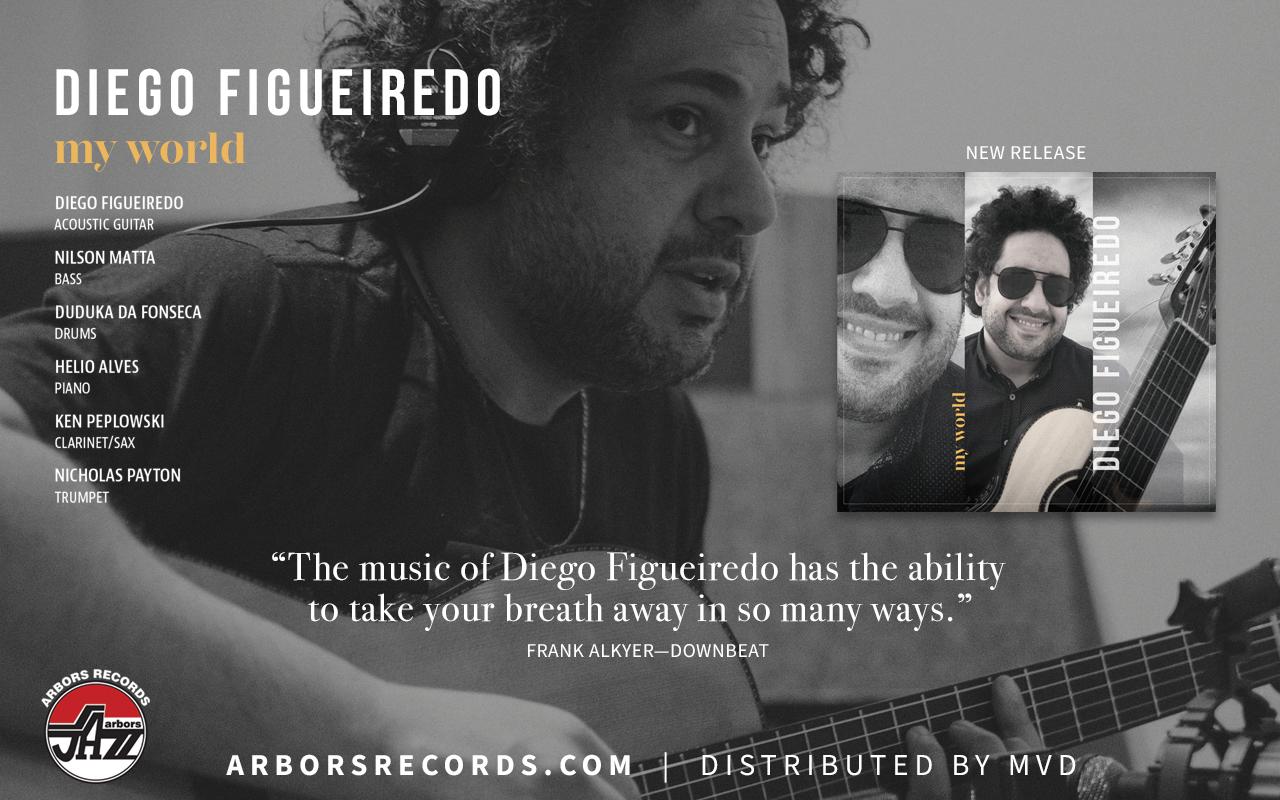
Art Baron’s Duke’s Men: Keeping a 39-Year Tradition Alive
“The Solos Were Something to Hear. In Solid Swing Tradition, Duke’s Men Focused on Relaxed, Conversational Melody”
BY SANFORD JOSEPHSON
In 1984, alto saxophonist Norris Turney and trombonist Art Baron formed a group called the Duke’s Men, a small band of Ellington alumni dedicated to keeping his music alive through performances. The band premiered that summer at Lush Life in Greenwich Village, and the positive reaction convinced Turney, (who had succeeded Johnny Hodges as Ellington’s alto saxophonist), Baron, and their fellow musicians to convert what was a one-shot project into a permanent arrangement.
Reviewing that Lush Life engage-
ment on August 23, 1984, The New York Times’ Jon Pareles wrote, “The solos were something to hear. In solid swing tradition, Duke’s Men focused on relaxed, conversational melody.”
Turney passed away in January 2001 at the age of 79, but Duke’s Men has been kept alive by Baron, who joined the Ellington big band in 1973 at the age of 23. When the Duke’s Men was created, Baron said, “I was learning to be a bandleader with a lot of guys who were a lot older than me. I was 33, but there were guys in their 60s.” The original band, in
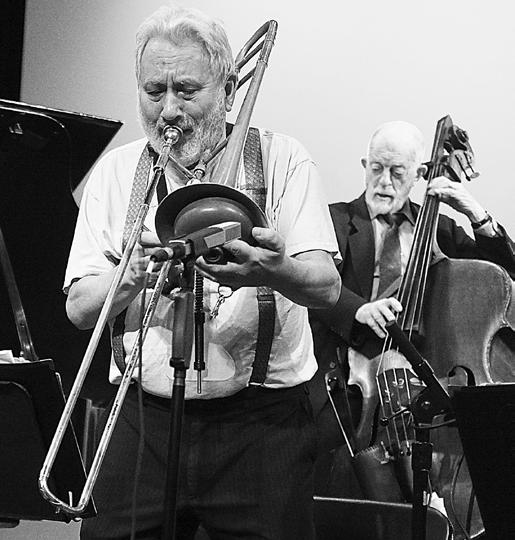
14 JULY/AUGUST 2023 JERSEY JAZZ NJJS.ORG JAZZ AT WILLIAM PATERSON
Art Baron (left) and Bill Crow at March 2022
Highlights in Jazz concert. PHOTO
BY MITCHELL SEIDEL
addition to Turney and Baron, had Peck Morris on bass, Milt Grayson on vocals, Heywood Henry on tenor saxophone, Joe Temperley on baritone saxophone, Richard Wyands on piano, and Ronnie Cole on drums.
At 7:30 p.m. on Tuesday, July 18, a current edition of the Duke’s Men will be performing at William Paterson’s Shea Center for the Performing Arts as part of WPU’s Summer Jazz Room Series. In addition to Baron, the musicians are: Mark Gross on alto saxophone and clarinet, Jay Brandford on baritone saxophone and bass clarinet, Mark Hynes on tenor saxophone and clarinet, Lafayette Harris, Jr., on piano, Bill Crow on bass, John Cooksey on drums, and Jerron Paxton on vocals.
The original Lush Life engagement, Baron recalled, was arranged by the Duke Ellington Society. Then, in December 1984, the band played for a week at Sweet Basil’s in the Village.
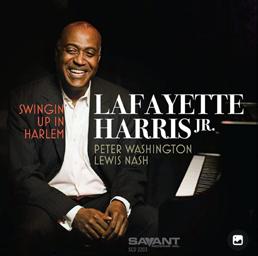
One of those performances was reviewed by The New York Times’ John S. Wilson, who wrote that the group “has an invigorating mixture of Ellington coloration, fresh approaches, and a repertory that goes adventurously beyond the repeatedly heard ‘Satin Doll’, ‘Mood Indigo’, and ‘Take the A Train’.” Baron, he added, “has taken on the characteristics of all the Ellington trombones from the plung-
er-muted wah-wahs of Tricky Sam Nanton to the broad, brash open-horn manner of Lawrence Brown in his late years with the band. But, he has added a boisterous spirit of his own.”
On July 18, Baron said, the group will, of course, play some of the standards such as “Mood Indigo”, but “We’ll also do ‘Black and Tan Fantasy’ and, from the Sacred Concerts, ‘Tell Me It’s the Truth’. The latter has a real gospel feel to it.”
Baron originally joined the Ellington Orchestra through a referral from trumpeter Jimmy Maxwell. “At the time,” he said, “they had a small band during the week at the Rainbow Grill, but on Sundays they’d go out of town and do a gig in other cities such as Washington, DC, and Boston with the full band. For whatever reason, Murray McEachern, the regular second trombone player, couldn’t make those gigs. When I got on the band bus,
people told me to be careful where I sat. Some of those guys had their seats for 50 years. So, I waited for people to get on the bus, and I hear a booming voice say, ‘You sit here.’ It was the third seat on the right. I wouldn’t move out of that seat for years. But those guys were so nice to me. I was a hippie with long hair. We all had those dinner jackets we’d wear for the gig, but on the bus, I was in jeans and a t-shirt. But they never had an attitude about me.”
Lafayette Harris’ current Savant album, Swingin’ Up in Harlem, has spent 14 weeks on the Jazz Week charts. At press time, it was Number 17, having peaked at Number 4. Reviewing it for AllAboutJazz, Jack Bowers wrote, “It simply does not get much better than this. Harris has been at or near the top of the A-list of in-demand pianists on the New York scene for almost four decades.”
In a recent interview with WBGO’s
15 JULY/AUGUST 2023 JERSEY JAZZ NJJS.ORG
JAZZ AT WILLIAM PATERSON
Sheila Anderson, Harris, a Baltimore native, said, “I used to watch Eubie Blake when he came to Baltimore a couple of times to do concerts. I would watch snippets of him on television, and I wanted to learn how to play the ‘Maple Leaf Rag’. It was a very hard piece for a kid, but I figured it out.” His mentors, after he moved to New York, he added, were Walter Bishop, Jr., Barry Harris, Kenny Barron, and Sammy Price.
Bill Crow was honored by the New Jersey Jazz Society at its 50th anniversary concert last October. Throughout his career, which began in the 1950s, Crow has played and recorded with a long list of jazz legends including Bob Brookmeyer, Benny Goodman, Marian McPartland, Gerry Mulligan, and Clark Terry, among many, many others. Baron calls the 95-year-old Crow “a walking history of our glorious music.”
When I interviewed Gross last
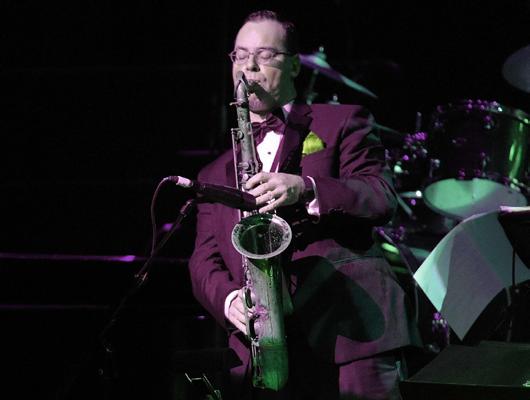
year prior to a performance at the South Orange Performing Arts Center, (Jersey Jazz, February 2022), he told me his greatest influence on alto saxophone was Cannonball Adderley. So, when he was hired by Cannonball’s brother, trumpeter Nat Adderley in 1995 (20 years after Cannonball’s death), it was “one of the highlights of my career.” Another important influence was tenor saxophonist Jimmy Heath. Gross played
in Heath’s Big Band for more than 10 years and sat next to him in Dizzy Gillespie’s Big Band. For the past eight years, Gross has been Director of the New Jersey Performing Arts Center’s Jazz for Teens program.
Brandford has his own band, the Jay Brandford Tentette, and he has performed in big bands led by David Berger, Ron Carter, and David Liebman. In November 2019, at the Jay and Linda Grunin Center for the Arts
in Toms River, NJ, Brandford played baritone saxophone in the Gerry Mulligan Tribute Quintet, led by former Mulligan drummer Ron Vincent.
Growing up in Chicago, Hynes was immersed from an early age in the blues-drenched tradition of such hometown saxophone heroes as Johnny Griffin and Von Freeman. In 2020, Hynes released an album called Tribute on the Cellar Live label. The album featured the late bassist Dennis Irwin, with whom Hynes played and recorded several times. The trio also included drummer Darrell Green. Irwin was diagnosed with terminal cancer before the album could be completed. A bonus track is dedicated to him, with Yasushi Nakamura on bass and Jerome Jennings on drums
Cooksey grew up in New York listening to rhythm and blues, jazz, and funk. He has performed with vibraphonist Roy Ayers, violinist
16 JULY/AUGUST 2023 JERSEY JAZZ NJJS.ORG
JAZZ AT WILLIAM PATERSON
Mark Hynes
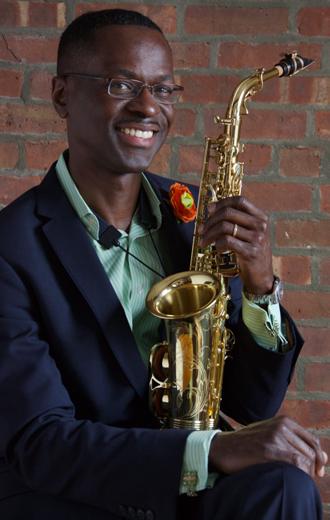
Noel Pointer, and pianist Kenny Kirkland, among many others. Paxton’s style draws from blues and jazz music before World War II. His major influences include Fats Waller and “Blind” Lemon Jefferson.
This year’s Summer Jazz Room, from July 17-21, is celebrating the 30th anniversary of the Jazz Room series. On Monday, July 17, the Summer Jazz Workshop faculty will play the music of Centennial Jazz Greats such as Milt Jackson, Dexter Gordon, Wes Montgomery, and Thad Jones. The Workshop, from July 16-22, offers a weeklong intensive and immersive experience for beginner, intermediate, and advanced instrumentalists or vocalists. The faculty includes trombonist Tim Newman (Director), drummer Jon Di Fiore, bassists Steve LaSpina and Marcus McLaurine, and pianist Angelica Sanchez. Pianist Helen Sung is Artist-in-Residence.
“ THIS YEAR’S SUMMER JAZZ ROOM IS CELEBRATING THE 30TH ANNIVERSARY OF THE JAZZ ROOM SERIES. ”
Sung will close the Jazz Room Series on Friday, July 21, leading her large ensemble, Big Band & Beyond, playing selections from “Portraits in Jazz”, a suite of big band musical tributes to the jazz masters she studied with at the Thelonius Monk Institute of Jazz Performance (now the Herbie Hancock Institute).
The Wednesday, July 19th concert will feature the Big Beat Big Band with trombonist Caleb Rumley, vocalist Allison McKenzie, trumpet-
er Duane Eubanks, and trombonist
Robin Eubanks. On Thursday, July 20, bassist Steve LaSpina will lead an all-star quintet that has recorded 11 albums together since 1992: alto saxophonist Billy Drews, trumpeter Dave Ballou, pianist Marc Copeland, and drummer Jeff Hirshfield.
All Summer Jazz Room concerts begin at 7:30 p.m. For more information or to order tickets, log onto wpunj.edu or call (973) 720-2371.
17 JULY/AUGUST 2023 JERSEY JAZZ NJJS.ORG JAZZ AT WILLIAM PATERSON
Mark Gross
PHOTO BY ADRIANA MATEO

The Bill Mays Trio SAVE THE DATE! Jersey Jazz LIVE! SUNDAY, OCTOBER 8, 2023 Madison Community Arts Center 10 KINGS ROAD, MADISON, NJ
Drummer Evan Sherman Pauses from Samara Joy Tour to Present Big Band Concert in Morristown
“We Always Like to Have Tons of Different Kinds of Things to Make Everyone Happy”
BY SANFORD JOSEPHSON
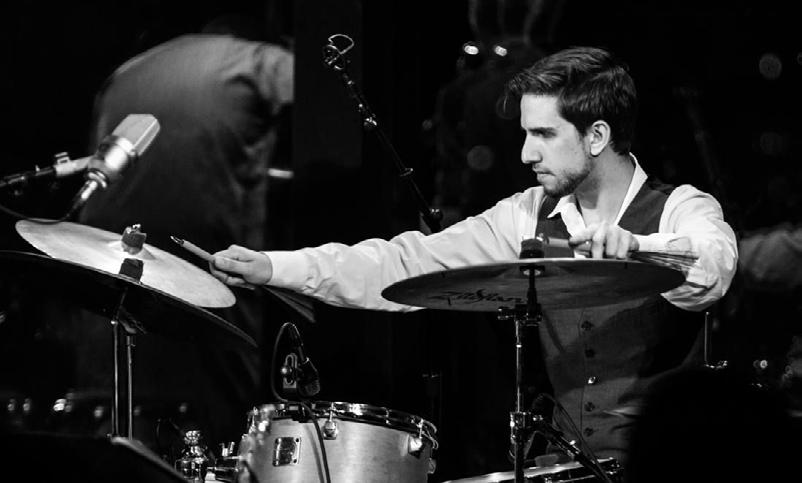
In 2019, 25-year-old drummer Evan Sherman met a 19-year-old vocalist named Samara Joy. “It was at Dizzy’s on a gig with (tenor saxophonist) Ruben Fox. I asked her, ‘Would you sing a couple of songs with my big band?’, and she said, ‘Yes’. After the pandemic, I ran into her briefly at Birdland and a few months later she asked me to play a gig with her, and, after that gig, she asked me to do a whole bunch of gigs—months of gigs. Last June (2022), was when we played our first gig of this run. In September, it really started going.”
In September, Joy released Linger Awhile, her first album on the Verve label, and in February 2023, she won two Grammy Awards, for Best Jazz Vocal Album and for Best New Artist (regardless of category).
“The schedule was already busy before the Grammy Awards,” Sherman said, adding that he was also part of Joy’s quartet on the January
19 JULY/AUGUST 2023 JERSEY JAZZ
ON THE BACK DECK
JAZZ
Evan Sherman in Morristown in August 2022
PHOTO BY JACK GRASSA
2023 Jazz Cruise. “There were tons of musicians on the boat,” Sherman recalled, “and the drummers were Kenny Washington, Lewis Nash, Greg Hutchinson, Jeff Hamilton—all my favorite drummers alive.
“At the end of the week,” he continued, “there was a jam session led by Christian McBride. Benny Green was the pianist, and Greg Hutchinson was the drummer. Samara and I went down to the jam session, and I really did not expect to even play because there were a lot of drummers lined up and other musicians trying to play. Within maybe 10 minutes or so, I found myself on stage with Christian McBride, Benny Green, and Samara, playing Tadd Dameron’s ‘If You Could See Me Now’. So, that was a pretty uplifting thing. We all needed a little bit of therapy after having been separated and having our livelihoods taken away for a period. In addition to being back on stage, I was able to sit with Kenny
Washington for hours and listen to him talk about the history of this music.”
The nonstop touring with Joy has continued. June gigs included the Hollywood Bowl Jazz Festival, Freihofer’s Saratoga Jazz Festival, and MCG Jazz in Pittsburgh. In July, there will be a European tour including the North Sea Jazz Festival in Rotterdam, Jazz A Vienne in Vienna, and the Umbria Jazz Festival in Perugia, Italy. In early August, there is the Caramoor Center for Music and the Arts in Katonah, NY, and the Newport Jazz Festival. Most of the touring features a quartet—Joy on vocals, Sherman on drums, Micheal Migliore (or Felix Moseholm or Paul Sikivie) on bass, and Luther Allison (or Cameron Campbell or Connor Rohrer on piano). Sometimes, the band expands to an octet with Kendric McCallister on tenor saxophone, David Mason on alto saxophone, Jason Charos on trumpet, and Donovan Austin on trombone.
A short break in August will enable

Part of last August’s big band. Front row, from left, saxophonists Abdias Armenteros, Erena Terakubo, Alex Laurenzi; middle row, trombone soloist Coleman Hughes and trombonist Nate Jones; back row, from left, trumpeters David Sneider and Jason Prover (partially hidden), and Andrew Wagner.
Sherman to bring his big band back to the Morris Museum’s Jazz on the Back Deck series on Thursday, August 10. At presstime, it was impossible for Sherman to know the makeup of the Morristown big band, but, as his custom, it will be a mix of seasoned veterans and emerging young talent. So, for example, it could include veterans such as trombonist Frank Lacy, trumpeter James Zollar, and tenor saxo-
phonist Jerry Weldon. The younger players might include McCallister and trombonist Coleman Hughes. The bassist, he said, will probably be young star Marty Jaffe, but could be veteran Mike Karn. “You never know,” he said. “I’m not sure who’s going to be around. It’s two months out. The way I do the big band, it’s very community, grass roots. In a month, I might meet someone new.” When Sherman’s big
20 JULY/AUGUST 2023 JERSEY JAZZ NJJS.ORG
JAZZ ON THE BACK DECK
PHOTO BY JACK GRASSA
band played at the Morris Museum in August 2022, the musicians included saxophonists Alex DeLazzari, Alex Laurenzi, and Erena Terakubo; trumpeters Jason Prover, David Sneider and Andrew Wagner; and trombonists Hughes and Nate Jones.
As for the music? “We always like to have tons of different kinds of things to make everyone happy. We love early 1900s music, but we also like 1970s music. It will definitely be a conglomerate.”
Sherman, who will turn 30 on August 17, is excited about the July European tour. “Jazz A Vienne, Umbria, those are all the places that I saw Roy Hargrove used to play at. I’m finally getting to go to those places. It’s been a long dream.” Sherman played in Hargrove’s big band, along with Lacy, shortly before the trumpeter passed away in November 2018. Lacy was also Sherman’s professor at the Manhattan School of Mu-

Sherman studied with trombonist Frank Lacy at Manhattan School of Music, calling him “One of my favorite mentors!
sic, “One of my favorite mentors!”
Three-and-a-half years ago, Sherman was Jersey Jazz’s first Rising Star (March/April 2020). It was shortly after his big band helped celebrate the opening of the New Brunswick Performing Arts Center in December 2019. During the pandemic, his street band, on the Upper West Side, was featured on The Today Show, and in January 2022, he self-released an album called Sidewalkin’ with members of the street band, saxophonist Weldon, keyboardist An-
thony Wonsey, bassist Tyler Mitchell, and trumpeter Joe Magnarelli.
In June 2022, Sherman led a quartet at the New Jersey Jazz Society’s first post-pandemic live concert, at the Madison, NJ, Community Arts Center. It was the debut of a new series called Jersey Jazz LIVE! The quartet members were Weldon, Davis Whitfield on piano, and John Lee on bass. The musical selections included jazz classics such as Lee Morgan’s “Ceora” and Charlie Parker’s “Now’s the Time”, along with the standard, “What’s New?” by Bob Haggart. Sherman’s quartet was preceded by a Rising Star opening act of student musicians from Livingston’s Newark Academy: tenor saxophonist Ethan Lee, pianist Ben Collins-Siegel, and bassist Ethan Freed.
The Jersey Jazz LIVE! concert was covered by AllAboutJazz’s David A. Orthmann, who pointed out that Sherman’s “12-bar trades with
the band on ‘Now’s The Time’ displayed the range and depth of his vocabulary.” He added that Weldon “did some nifty dance steps to a particularly swinging break.
“One of the pleasures of jazz fandom,” Orthmann continued, “is monitoring the progress of young musicians as closely as possible over a protracted period ... While there is certainly a lot of great music that competes for our attention, Evan Sherman’s efforts as a drummer and musical thinker are worthy of more than casual attention over the long haul.”
Other July/August Jazz on the Back Deck concerts are: Martin Pizzarelli & Friends, July 13; Amani: A Celebration of Harry Belafonte, July 27; and Alla Boara, August 19. All concerts begin at 7:30. For more information and to order tickets, log onto morrismuseum. org or call (973) 971-3700.
21 JULY/AUGUST 2023 JERSEY JAZZ NJJS.ORG
JAZZ ON THE BACK DECK
PHOTO BY JACK GRASSA
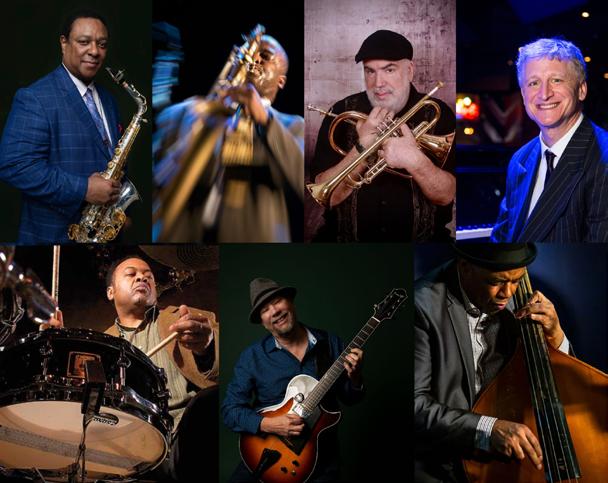
June Appearances at NYC’s Smoke and Syracuse Jazz Fest Set Stage for More Festivals
“It’s the Best Musicians Playing Great Music and Enjoying it Thoroughly, Which Becomes Infectious”
BY JAY SWEET
One of alto saxophonist Vincent Herring’s greatest influences was Julian “Cannonball” Adderley, so it’s not surprising that his current band, which appeared in June at New York’s Smoke Jazz Club and at the Syracuse National Grid Jazz Fest, takes its name from the title of Adderley’s only Blue Note album as a leader, released in 1958.
Herring played with Cannonball’s brother, cornetist Nat Adderley, in the early 1990s. “I remember playing on the street in New York,” Herring recalled, “and the bass player Walter Booker heard me playing, and he asked, ‘Hey, man, do you know any Cannonball Adderley music? You kind of sound like him.’ I said, ‘I know all of his tunes,’ and he asked me to sit in with Nat. At the time, Nat did not really have a band; Cannonball had died, and Nat had a group of musicians he would rotate if he had a gig.” Herring joined Adderley’s band for a tour to Australia and stayed with him until the cornetist’s death in January 2000. Then, he joined drummer Louis Hayes’ Cannonball Adderley Legacy Band.
22 JULY/AUGUST 2023 JERSEY JAZZ NJJS.ORG
VINCENT HERRING’S SOMETHING ELSE!
Clockwise from top left: Vincent Herring, James Carter, Randy Brecker, David Kikoski, Essiet Essiet, Paul Bollenback, Jeff ‘Tain’ Watts.
VINCENT
The Something Else! septet usually includes Randy Brecker on trumpet, James Carter on tenor saxophone, Paul Bollenback on guitar, David Kikoski on piano, Essiet Essiet on bass, and Jeff “Tain” Watts on drums. At Smoke, Jeremy Pelt subbed for Brecker on trumpet, and in Syracuse, Boris Kozlov spelled Essiet on bass.
“I decided to create a band that was a byproduct of what I grew up with and enjoyed,” Herring explained. “It’s kind of a soul jazz review. It’s songs from composers that I grew up with, like Freddie Hubbard, Stanley Turrentine, and George Benson. It’s music that feels great, and all of the
“
musicians in the band are in tune with it. It’s refreshing because it’s a sound that’s timeless but still kind of needed. It’s the best musicians playing great music and enjoying it thoroughly, which becomes infectious.”
The band’s lineup is always changing due to the musicians’ busy schedules, and sometimes Freddie Hendrix subs on trumpet, Eric Alexander spells Carter on tenor sax, Russell Malone is on guitar, Mike LeDonne on piano, Yasushi Nakamura on bass, and Lewis Nash or Johnathan Blake in for Watts on drums.
The trumpet chair is particularly significant because the Cannonball
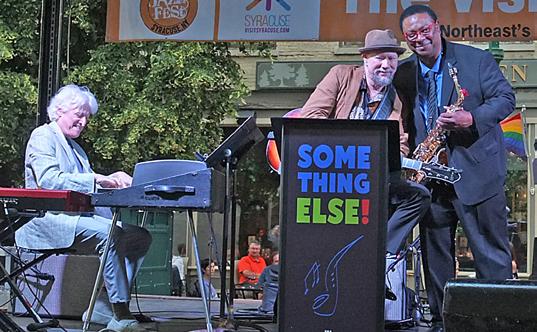
At
Adderley album, Something Else!, was one of the rare occasions in which Miles Davis performed as a sideman.
When Something Else! appeared at Birdland last fall, The New Yorker’s Steve Futterman wrote that “the band wears its hard-bop heart on its sleeve
... It practically dares audiences to sit still and remain on their best behavior.”
THE BAND PRACTICALLY DARES AUDIENCES TO SIT STILL AND REMAIN ON THEIR BEST BEHAVIOR. ”
Herring has been on the scene for nearly 40 years. His discography reveals more than 20 titles as a leader and over 250 as a sideman. He is also a noted educator who teaches at the Manhattan School of Music and William Paterson University. He was born in Kentucky but was raised mainly in California. “My parents divorced when I was three years old, so I grew up mostly with my mother, who was a jazz fan,” he recalled. “That was
23 JULY/AUGUST 2023 JERSEY JAZZ NJJS.ORG
HERRING’S SOMETHING ELSE!
Syracuse National Grid Jazz Fest, from left, David Kikoski, Paul Bollenback, and Vincent Herring.
PHOTO BY MITCHELL SEIDEL
VINCENT HERRING’S SOMETHING ELSE!
the music played in the house most of the time; there was also soul and R&B. I spent the summers with my dad, and he would listen to any music on the AM radio stations, and I would practice in his garage. I overdosed on practicing. I practiced all of the time.
“I was completely cocky,” he continued, “and signed up for an advanced band in school, where I played tenor saxophone. The band director called me out and asked me to play solo, and I couldn’t play the part, so he kicked me out of the band. I was told I could not join the beginning band without private instruction. So, my attitude was, I’ll show him, and I got an instructor. My motivation was to get back in the band, and I practiced a lot; and the following year I signed up for advanced band and became first chair.”
Herring studied at California State University, Chico. He then joined the Jazz Knights, a U.S. Military Academy Band stationed at
West Point. “Some great musicians were there, and it got me to New York. I had to go through basic training. Even though I didn’t like it at the time, it was a good experience. I needed discipline and structure, and organization. While in the Army, I got to study clarinet with Eddie Daniels and saxophone with Phil Woods, and the Army paid for it.”
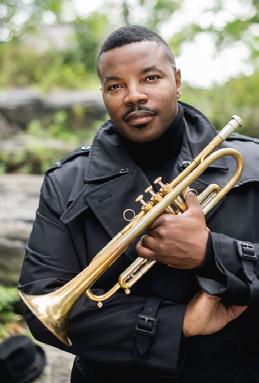
In the February 2021 issue of Jersey Jazz, Herring paid tribute to Woods in connection with the publication of Woods’ memoir, Life in E Flat, co-written with Ted Panken (Cymbal Press). Herring first heard Woods on the Billy Joel hit recording, “Just the Way You Are”. “
“Some of my current students ask me what I learned from Phil Woods,” he wrote. “After all of my lessons, hearing Phil Woods live hundreds of times, and playing several concerts with him, I learned that Phil Woods is one of the Great Jazz Masters and his musicianship has rarely been matched. Phil showed me where the bar to greatness is located. I might not ever reach it, but I know where it is . . .”
After the Jazz Knights, Herring studied at Long Island University and then toured as a member of Lionel Hampton’s Big Band. “It was an enriching experience,” he said, “and I enjoyed it very much. We played a gig at the
White House, and I was paid $85 for it.”
Following the experience with Hampton, Herring began playing more with smaller groups, where he could stretch out as an improviser. One such group was Horace Silver’s Band. “I wasn’t ready for that gig, in some respects,” he confessed. “I wish I didn’t do it because I was premature in my development.” Around this time, he began a long association with pianist Cedar Walton and Nat Adderley. “With Horace Silver, we toured all over. Nat Adderley invited me up to play at a jazz festival, and Cedar Walton was on piano. Then Cedar Walton asked me for my number, and I was totally surprised. He called me up, and we did a week at the Village Vanguard. Afterward, he said, ‘You are quite promising, but you are not ready yet; I’ll call you again when you’re ready.’ He called me again two years later, and I was ready; and I played with him for 21 years.”
24 JULY/AUGUST 2023 JERSEY JAZZ NJJS.ORG
Jeremy Pelt was the trumpeter at Smoke.
“
ONE
OF HERRING’S EARLIEST MUSICAL IDOLS WAS TRUMPETER FREDDIE HUBBARD. ”
Herring has also appeared on stage or on recordings with such giants as Dizzy Gillespie, Wynton Marsalis, and Dr. Billy Taylor, among many others. One of Herring’s earliest musical idols was trumpeter Freddie Hubbard. “Over the years, I got to sit in with him and know him,” he said. “I wasn’t in his band because I was with Nat, but I would occasionally work with him. I did do a few records with him. Freddie would call me in the middle of the night all of the time, and he would play piano for me. We had great conversations, and he shared
some amazing stories with me.”
Something Else! will be performing throughout the summer, at such events as the Northwest Jazz Festival in Lewiston, NY, on August 26, and at the Charlie Parker Jazz Festival in New York City on August 27.
More on Vincent Herring is available on Jay Sweet’s podcast, “30 Albums for 30 Years (1964-1994)”, available on Spotify (open.spotify. com/episode/2npWZk7dUH3Q2euihbRjS4?si=5d7c451369f647b0) or YouTube (youtu.be/j8Zc-TLZaVU)
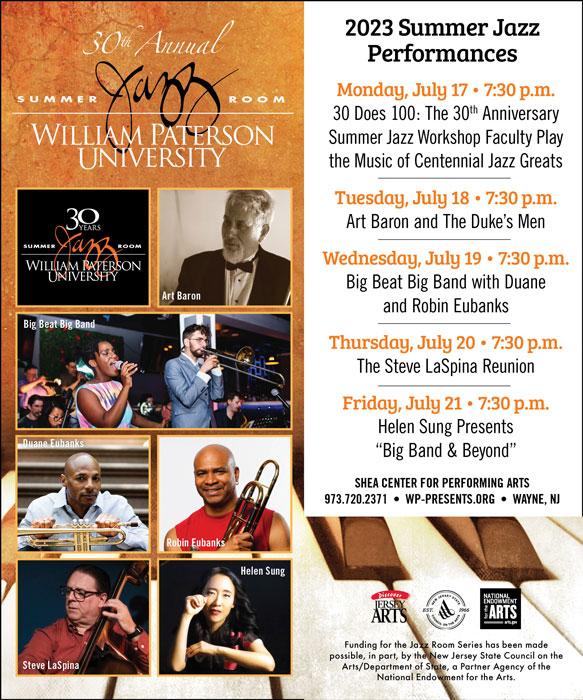
NJJS.ORG 25 JULY/AUGUST 2023 JERSEY JAZZ
VINCENT HERRING’S SOMETHING ELSE!
RISING STARS
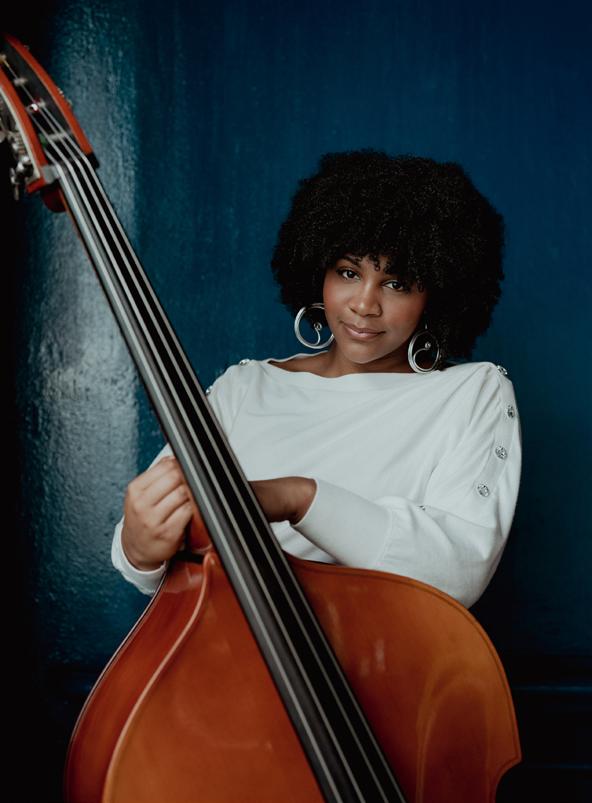
Carnegie Hall NYO Jazz Program, Jazz House Kids All-Stars
“These Fine Young People Stand Alongside the Greats of Today and on the Shoulders of the Pioneers of Yesterday.”
BY SANFORD JOSEPHSON
Bassist Laura Simone-Martin of Lawrenceville, NJ, is heading back to Carnegie Hall’s NYO Jazz Program for the second consecutive year. “Last year,” she said, “gave me that first-hand experience of what it is like being on the road for so long and how much energy goes into it.”
Joining Simone-Martin as the other New Jersey student musician invited to this year’s NYO Jazz Program is trumpeter Alvaro Caravaca,
a resident of Budd Lake, who graduated in June from Mount Olive High School. The program accepts 22 student jazz musicians from across the country. Caravaca led a Jazz House Kids quartet in the Rising Stars opening act at the August 28, 2022, JerseyJazzLIVE! concert presented by the New Jersey Jazz Society at the Madison, NJ, Community Arts Center.
At last July 28th’s initial NYO Jazz Orchestra concert at Carnegie Hall’s
26 JULY/AUGUST 2023 JERSEY JAZZ
Laura Simone-Martin
RISING STARS
Stern Auditorium, Simone-Martin energized the band with her solos on Endea Owens’ “Ida’s Crusade”, a tribute to journalist/activist Ida B. Wells. “It really made me think about open solos in a different way,” she said. “I had never really played open solos before that. I just felt so empowered playing her song, written by a Black woman (Owens) about a trailblazer (Wells). I felt really inspired playing her tune on the Carnegie Hall stage. It was an honor.”
The NYO Jazz Orchestra followed that Carnegie Hall concert with a seven-city tour, which began in Cleveland and concluded at the Kennedy Center in Washington, DC. The guest
artist for the New York concert and the tour was vocalist Jazzmeia Horn.
This year, the NYO will resume international touring. After the New York concert, the band will leave on a European tour that will include such destinations as Amsterdam, Berlin, and St. Moritz. The guest artist will be vocalist and NEA Jazz Master Dee Dee Bridgewater. Leader and Artistic Director of the NYO Jazz Orchestra is trumpeter Sean Jones. Simone-Martin graduated from Lawrenceville High School in June and will be attending the Jazz Studies program at Michigan State University in the fall, “to study with Rodney Whitaker. I’m super excited. So

many bass players have come out of Michigan State—Endea Owens, Liany Mateo, Ben Williams.” Whitaker is Director of Jazz Studies in MSU’s College of Music. He spent seven years with the Wynton Marsalis Septet and Jazz at Lincoln Center Orchestra and has played with such
“ WHEN CARAVACA RECEIVED THE NEWS THAT HE WAS ACCEPTED INTO NYO, ‘I REALLY JUMPED UP AND DOWN.’ ”
legends as Jimmy Heath, Marian McPartland, and Dizzy Gillespie.
When I interviewed Simone-Martin last year (Jersey Jazz, July/August 2022), she told me about a program called Queen Amina that she created in the fall of 2021 for the Lawrenceville Intermediate School. It was named after the African warrior queen and designed to educate fourth through sixth grade female instrumentalists. “I teach them about women composers and women instrumentalists and the history of the music,” she told me.
Even though Simone-Martin will be in East Lansing, MI, in the fall, the program will continue through a grant supported by Dorthaan Kirk, Newark’s “First Lady of Jazz” who presents the Jazz Vespers concerts at Newark’s Bethany Baptist Church, and Lawrenceville resident, Fred Vereen, Jr. The grant enabled Simone-Martin to “invite a bunch
27 JULY/AUGUST 2023 JERSEY JAZZ NJJS.ORG
Alvaro Caravaca
RISING STARS
of guest artists and also have a big concert featuring (alto saxophonist) Tia Fuller, me on bass, Allison Miller on drums, and pianist Alexis Lombre,” at an event on March 15. The event also included master classes for the Queen Amina members.
As for the continuation of the program this fall, Simone-Martin said she has been having discussions with Melissa Walker, Founder and President of Jazz House Kids. “Jazz House Kids will do the in-house teaching,” she said, “while I’ll still be able to come in on Zoom and still be there for the girls. It’s an active role, just from a farther distance.”
When Caravaca received the news that he was accepted into NYO, “I really jumped up and down,” he said. “I’m looking forward to it, and I have no doubt it’s going to be a life-changing experience.” In the fall, Caravaca will be attending the
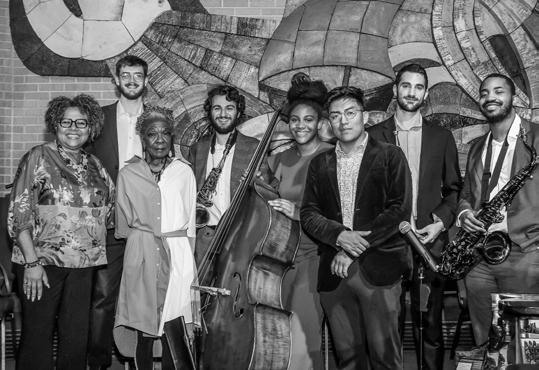
ing a brass master class at Montclair State’s John J. Cali School of Music. He played Benny Golson’s “Stablemates” and traded fours with Marsalis, who told him, “I love what you did. That was unbelievably soulful.”
University of Rochester’s Eastman School of Music as a Jazz Studies major. “The faculty there is really amazing,” he said. “They were super friendly and made feel like I was home when I visited them.”
Clay Jenkins, Professor of Jazz Trumpet, recalled meeting Caravaca “when he auditioned for the Jazz Department at the Eastman School of Music. His maturity was
very apparent, both in his soulful musicianship, and in his respectful conversation. I so look forward to his being a student at Eastman in the coming fall semester.”
During high school, Caravaca was part of the Jazz House Kids program and the New Jersey Youth Symphony Orchestra. In November 2021 he had an opportunity to play with Wynton Marsalis, who was giv-
In the spring of 2021, Caravaca was part of the JHK Big Band that was a finalist in Jazz at Lincoln Center’s Essentially Ellington competition. While there, he met Nathaniel Williford, a trumpeter at Osceola County School for the Arts in Kissimmee, FL. “Man, let me tell you,” Caravaca said, “he was the most humble guy I ever met. I could not even tell he was going to be one of the greatest trumpet players I heard at my age.” Caravaca is looking forward to a reunion with Williford, who, like Simone-Martin, is back for his second summer with the NYO Jazz Orchestra.
On Saturday night, June 3, Sim-
28 JULY/AUGUST 2023 JERSEY JAZZ NJJS.ORG
PHOTO BY TONY GRAVES
From left, Melissa Walker, Matt Lee, Dorthaan Kirk, Alex Laurenzi, Laura Simone-Martin, Galo Inga, Andrew Wagner, Jalin Shiver
RISING STARS
one-Martin appeared as part of the Jazz House Kids All-Star sextet at Newark’s Bethany Baptist Church Jazz Vespers, soloing on Dizzy Gillespie’s “Con Alma”. She was joined by alto saxophonist Alex Laurenzi, pianist Galo Inga, trumpeter Andrew Wagner, tenor saxophonist Jalin Shiver, and drummer Matt Lee.
Laurenzi, Music Director of the
All-Stars band, grew up in Mountain Lakes, NJ. He performed at NJJS’ last live event before the pandemic, on February 2020 at Shanghai Jazz in Madison. He is a 2020 graduate of Princeton University where he received the Isidore and Helen Sacks Memorial Prize from the Princeton Music Department for his contributions to the musical
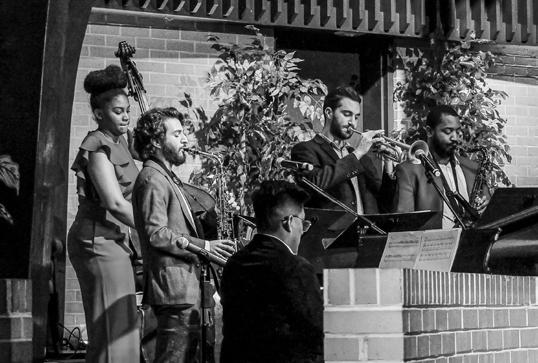
community. He has also won two DownBeat Student Soloist Awards and two Outstanding Soloist awards from the Essentially Ellington Competition and Festival. A member of the Jazz House Kids Big Band for three years, Laurenzi toured Peru in April 2016 with a select group from JHK on behalf of the U.S. Embassy.
In July and August, Laurenzi has several dates at Brooklyn’s pinkFrog Café, leading a trio with bassist Solomon Gottfried and drummer Connor Parks. The performances, which begin at 7 p.m. are on July 8 and 22 and August 5 and 19.
Inga is currently studying for his Master’s Degree at Montclair State with pianist Rachel Z. He’s also JHK’s Senior Program Manager in Schools and Evaluation, working with public school students in Newark and Paterson.
Wagner, originally from Mendham, NJ, is a William Paterson graduate and studied there with trumpeter
Jeremy Pelt, who described him to Jersey Jazz as, “the type of student that every teacher hopes and dreams about. It’s not just that he was a good student while he studied with me at William Paterson; it’s that he continues to do the work and strive for not only what he’s been taught, but, more importantly, what he’s observed. He restores my belief that there are still young adults that are thorough and serious about this art form.” A 2017 recipient of JHK’s James Moody Scholarship, Wagner is appearing July 30 at Birdland with baritone saxophonist Courtney Wright.
Shiver, a 2019 James Moody Scholarship awardee, is finishing up his jazz education at New Jersey City University. In December 2018, when he was a senior at Newark’s Arts High School, Shiver was selected by the Thelonious Monk Institute to be part of the National Peer-to-Peer All Star Jazz performance at the Kennedy
29 JUNA 2023 JERSEY JAZZ
From left, Laura Simone-Martin, Alex Laurenzi, Galo Inga, Andrew Wagner, and Jalin Shiver.
RISING STARS
Center in Washington, DC. Along with students from across the country, he performed with such jazz stars as pianist Herbie Hancock and saxophonists Wayne Shorter and Melissa Aldana.
Lee, Laurenzi pointed out, “is the middle child of what we call the first family of jazz education. His father, (tenor saxophonist) Mike Lee was the original Director of Jazz Education at Jazz House Kids. His older brother (saxophonist) Julian Lee, was one of the first great stars we (JHK) had. Matt’s a little younger than Julian, but he’s been playing up a storm since he was eight years old.” Matt and Julian’s younger sister, violinist/vocalist Jacquie Lee was the Rising Star in the April 2023 issue of Jersey Jazz.
In addition to “Con Alma”, the JHK All-Stars played other jazz classics such as Wayne Shorter’s “One By One” and Clifford Brown’s “Daahoud” at the December 3rd Bethany
Jazz Vespers concert. At the end, JHK Founder and President, vocalist Melissa Walker, joined in for a closing performance of the Harry Warren/ Mack Gordon standard, “The More I See You.” Then, she recalled that, “Twenty-two years ago, Dorthaan Kirk asked me to do a concert for kids in Newark. She said, ‘I don’t just want a concert; I want a program. It’s going to be kids, 2-12, with their parents.’ Then, Phil May, who was Director of Arts for Newark, said, ‘That’s a program we should bring to the schools.’”
The result, Walker added, is that, through Jazz House Kids, “50,000 young people have been provided access, learning, career development, and community building. Thank you, Dorthaan.” Pointing to the AllStars sextet, Walker said, “These fine young people stand alongside the greats of today and on the shoulders of the pioneers of yesterday.”

NJJS.ORG 30 JULY/AUGUST 2023 JERSEY JAZZ
for an all-new season! join us For the complete performance schedule, visit grunincenter.org. Grunin Center Box Office Hours Tuesday-Friday 12:00pm-5:00pm 732-255-0500 College Drive P Toms River, NJ Contact the Box Office four weeks prior to any show to arrange for disability and accessibility services.
Tal Farlow: A Brilliant Guitarist and Occasional Sign Painter
He Played in Red Norvo’s Legendary Trio with Charles Mingus on Bass
BY JOE LANG
It is difficult to believe that it was 25 years ago, on July 25,1998, that the legendary jazz guitarist Tal Farlow left us. Farlow is fascinating for many reasons. He is considered one of the finest and most accomplished jazz guitarists ever on the scene. He was a talented sign painter, having started in this field before becoming a significant jazz guitarist, and continuing this activity once he settled at the Jersey Shore. He was a warm individual with a keen sense of humor who was admired by his fellow musicians for his human traits as well as for his immense creative talent.
Farlow was born on June 7, 1921, in a small town near Greensboro, NC, named Revolution. The Farlow family was of humble circumstances, but music was an important part of their family life. His mother played piano, and his father was a mandolinist. Tal began teaching himself to play his father’s mandolin, but eventually turned to playing guitar. His ear for music and his innate talent enabled him to master the guitar without formal training.
His father insisted that Tal learn a trade, and recognizing that his son had artistic talent to complement his
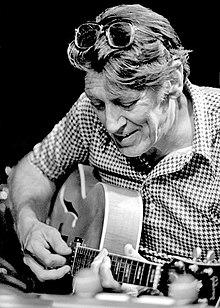
31 JULY/AUGUST 2023 JERSEY JAZZ NJJS.ORG JAZZ HISTORY
musical gifts, he helped him become an apprentice for a local sign painter.
Rejected for military duty because of fragile health, Farlow occupied himself with his job painting signs and playing guitar in amateur bands. He had a chance meeting with pianist Jimmy Lyons who was stationed at a local military base. Impressed with Farlow’s playing, Lyons strongly urged him to become a professional musician. Soon an opportunity came to tour with a Philadelphia-based band, and Farlow got his first taste of life on the road. He continued to return home and to sign painting between gigs. He was discovered by pianist/vibraphonist Dardanelle Hadley, known professionally simply as Dardanelle, during one of his stays in Philadelphia. She invited him to join her trio, and once more it was back on the road. The gigs were on and off, so he returned to his sign painting back home,

but eventually Dardanelle landed a series of engagements that led the trio to New York City’s Copacabana.
Feeling creatively stifled by his work with Dardanelle, he once more returned to North Carolina, but it was not long before he got a call to join a trio led by vibraphonist Marjorie Hyams. A series of jobs eventually led him back to New York City where he settled in for the long pull.
Within a year, Farlow met the next
influential figure in his life, vibraphonist Red Norvo. Norvo heard him playing at a club in New York City, and was deeply impressed. When Norvo decided to base his trio in Los Angeles, his then current guitarist, Mundell Lowe, did not want to head westward, and recommended Farlow for the guitar seat. Soon Farlow found himself in a group that became legendary once Charles Mingus became the bassist.
He remained with Norvo from late 1949 until early 1953 when a hand injury forced him to leave the trio, and head back to New York City. His next major gig was a stay for several months with Artie Shaw’s Gramercy Five. When Shaw got an engagement in Las Vegas, Farlow decided to stay in New York, and that soon led to his recording and gigging, mainly as a leader.
After an initial session for Blue Note, he joined the roster of Norman Granz’s Norgran label, which eventually became Verve. Between 1954
and 1959, Farlow recorded extensively as a leader and as a sideman for Verve. These recordings were collected in a terrific boxed set by Mosaic, but the set is unfortunately out-of-print, although many of the individual albums can still be obtained.
By the early 1960s, Farlow had moved to Sea Bright, NJ, and turned back to painting signs. He also started a formal relationship with Gibson guitars who produced a series of Tal Farlow models. Later in the decade, he started to get back on the scene as an active player.
Throughout the rest of his life, he remained active, recording occasionally, including a series of terrific albums for the Concord Jazz label. He made many trips to Europe for club dates and festivals. In 1992, he replaced the ailing Barney Kessel in the Great Guitars trio with Herb Ellis and Charlie Byrd.
Much of his playing took place at local venues on the Jersey Shore,
32 JULY/AUGUST 2023 JERSEY JAZZ NJJS.ORG
JAZZ HISTORY
including a memorable 10-year run of duo gigs with bassist Gary Mazzaroppi at the Yankee Clipper in Sea Girt. They also played frequently at Zinno’s in Manhattan. In the early 1990s, he and Mazzaroppi appeared at one of the last New Jersey Jazz Society Jazzfests to be held at Waterloo Village in Stanhope.
One of the best ways to remember Farlow is to view Talmage Farlow: A Film by Lorenzo DeStefano, a superb documentary. What comes through strongly in the film are the
“
strength, talent, wit, warmth, creativity, and humility that Tal Farlow possessed. The tale surrounding the making of DeStefano’s superb 1981documentary,Talmage Farlow, brings his humble nature to the fore.
The focus of the movie, in addition to Farlow, was a concert scheduled to take place at the Public Theatre in New York City on August 9, 1980, featuring the first public performance in the Big Apple by Farlow in many years. Although he had been keeping active on the lo-
TALMADGEFARLOW:
AFILMBYLORENZODESTEFANO IS A SUPERB DOCUMENTARY. ”
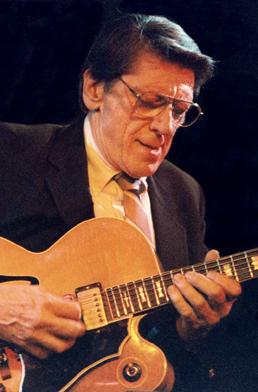
cal music scene at the Jersey Shore, he was reluctant to travel far from home. After much persuading on the part of producer Lorenzo DeStefano, Farlow agreed to play a concert in New York with pianist Tommy Flanagan and bassist Red Mitchell. DeStefano also convinced Farlow to be the subject of the documentary.
Farlow suggested that DeStefano contact the erratic but brilliant guitarist Lenny Breau and invite him to visit the Farlow home with DeSte-
fano capturing the meeting on film as a part of the documentary. This came to pass and became a highlight of the film. During the ensuing evening, Farlow invited Breau to join him at a gig he was playing in a restaurant in Rumson, NJ. Part of that encounter also appeared in the film.
The Public Theatre concert is captured on the CD, Live at the Public Theatre/The Penthouse Session. The concert was a total sellout, with many disappointed fans turned away from the box office empty handed. There are eight selections from the concert on the disk, as well as three tunes that were captured during rehearsals in Flanagan’s apartment. The music is sublime. The empathy among the three musicians is stunning. They play like they had been on the road together for several years. Each of them is a superior musician, full of imagination and technique. Among
NJJS.ORG 33 JULY/AUGUST 2023 JERSEY JAZZ
JAZZ HISTORY
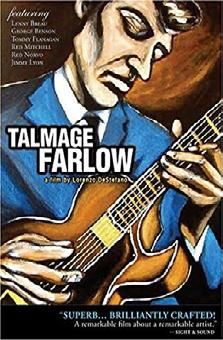

the tunes are such classics as Hoagy Carmichael’s “Stardust” and Victor Young’s “My Foolish Heart”.
Another album, Chance Meeting, has eight selections from the only dual performance by Farlow and Breau, one that took place on May 21,
1980, at the restaurant in Rumson, The Sign of the Times. Sadly, this is the only time that these superb guitarists met, for the sparks that fly between them are natural and exciting. Breau was a fluent player who combined musical brilliance with a tragic, undisciplined lifestyle that led to an early demise. Farlow was equally brilliant as a musician, but was possessed with the kind of good judgment and discipline that Breau lacked. Together, however, the music took over, and we are fortunate to have this taste of a magic meeting between them.
The DVD of the documentary and both albums are available at lorenzodestefano.com.
If you can find a copy, Tal Farlow’s life story is wonderfully presented in a 2014 book, TAL FARLOW: A Life in Jazz Guitar by Jean-Luc Katchoura with Michele Hyk-Farlow.
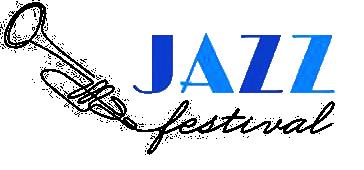
NJJS.ORG 34 JULY/AUGUST 2023 JERSEY JAZZ
JAZZ HISTORY
MIDDLESEX COUNTY OPEN TO THE PUBLIC • FREE ADMISSION MIDDLESEX COUNTY, NEW JERSEY Visit middlesexcountyjazzfestival.org for more information Perth Amboy SEPTEMBER 29TH Metuchen SEPTEMBER 30TH Woodbridge OCTOBER 1ST Edison SEPTEMBER 28TH New Brunswick SEPTEMBER 30TH
BY DAN MORGENSTERN
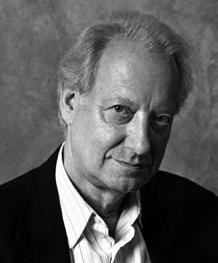
One of the most interesting, unusual and beautifully executed historical albums—not exactly jazz but very first recordings by an all-Black band—is Encore “Lovey!: The Historic Trinidad String Band Recordings 1912 and 1914, three CDs in a 48-page hard cover-bound book with extensive contemporary illustrations and splendidly researched illuminating notes. It was produced by the trio of John Crowley, Steve Shapiro and Dick Spottswood for RWA Records (Richard Weize Archives, a division of Rockstar Ltd. Records, Ireland, info@rock-star-records.com).
The three gentlemen and scholars have done an absolutely amazing job, heading a team including Chris Zwarg, who did the amazing mastering of the 65 tracks culled from mostly Columbia and a few Victor 78s. Lovey was the professional name of George R.L Baillie, a violinist who changed the spelling to Bailey. The band included a second violinist, the clarinetist Walter Edwards, a pianist, a flutist, a mandolinist, two guitarists, a double bass-

ist, a braga player, and two Quattros. The excellent clarinetist, not present on the later batch of records, is the closest thing to jazz, but this is Trinidadian dance music—lots of waltzes, of the South American, not Viennese, kind, many Paseos, and a Tango. Listeners will not be surprised that the band was beloved by dancers.
The recording, until the very last batch, was done in New York, where the band also performed. “Lovey” died in 1937. The obituaries noted that the band had performed for the Prince of Wales, noted for his interest in jazz, which Lovey’s music was not, but it will make you wiggle your toes!
Another recent recording project of
unusual interest is firmly rooted in jazz. Mary’s Ideas by the Umlaut Big Band is a tribute to—you guessed it, Mary Lou Williams, the greatest lady of jazz. In spite of its name (“Umlaut” is the German word for the wee dots above letters that change their pronunciation) the band, of various sizes, is French-based, and first rate, as is its approach to Mary Lou’s legacy. (It is a special delight for this writer that the creators and executants of this veritable masterpiece came to the Rutgers Institute of Jazz Studies, site of Mary’s invaluable legacy, to seek and find—more than any American musicians have bothered to do).
The understanding of Mary’s manifold legacy demonstrated by these two CDs is profound, and the resultant music a joy to the ears, spanning the entire range of her career and including first recordings of a number of works. The size of the band varies, but the execution does not. It is uniformly first class. Information can be obtained via umlautbb@gmail.com.
35 JULY/AUGUST 2023 JERSEY JAZZ NJJS.ORG
DAN’S DEN
Kansas City Jazz: A Little Evil Will Do You Good
By Con Chapman
358 PAGES (ILLUS.), 2023, EQUINOX, SHEFFIELD, UK
BY JOE LANG

During the 1920s and 1930s, Kansas City was a hotbed of jazz activity. Among the names associated with Kansas City are Bennie Moton, Count Basie, Andy Kirk, Mary Lou Williams, Jay McShann and Charlie Parker. Con Chapman has written a detailed exploration of this slice of jazz history in Kansas City Jazz: A Little Evil Will Do You Good.
For those interested in details, Chapman supplies plenty of those. Throughout the book, Chapman
discusses many musicians who are unknown or forgotten by most jazz enthusiasts. While it is information of value to those who enjoy digging deep into jazz history, it can make one feel that they are reading a textbook rather than a historical narrative.
He begins with a chapter devoted to what he considers the roots of jazz, ragtime, minstrelsy and tent shows, with particular emphasis on the contributions of Scott Joplin and Wilbur C. Sweatman.
He then addresses the rhythmic development of the jazz that evolved from Kansas City. There are detailed discussions of the Blue Devils and Benny Moten’s bands, the most prominent of the early Kansas City jazz ensembles that gained wider recognition, as well as touching upon other regional bands. One aspect of the evolution of rhythm sections in Kansas City was the replacement of the banjo with guitars, and the expansion of the size of drum sets, with the accompanying broader palates of musical shadings made possible by these developments.
Chapman then addresses the rise to prominence of Count Basie, who attracted many of the players who were on the Moten band when he died. Moten’s nephew, “Bus Moten’” served as the succeeding leader, but he soon lost the respect of many players who defected to Basie. The
ascendency of Basie’s band is covered in detail, including how he attracted many players who were to become important contributors to the Basis sound, the growing pains that the band endured, and the breakthrough radio broadcasts that put the band in the national spotlight.
Two features of the Kansas City jazz scene were jam sessions and the ways in which riffs, casual phrases usually developed in the jam session environments, were used as the basis for defined tunes. Many of these riff-based tunes were played in “head” arrangements that evolved organically rather than being formally written down as formal charts.
Chapman then devotes several chapters to the styles and players that developed on several instruments, piano, tenor saxophone, alto saxophone, trombone and trumpet, as well as one exploring the vocal scene. For
36 JULY/AUGUST 2023 JERSEY JAZZ NJJS.ORG
BOOK REVIEW
each chapter, he makes mention of the most prominent and many lesser noted practitioners of their respective areas of musical concentration. It is interesting to discover several names that have generally been overlooked, but again his devotion to detail can be a bit burdensome for the reader.
Before his chapter on the alto sax, he turns his attention to another major band from Kansas City, Andy Kirk and his Clouds of Joy. Interspersed with the development of the band is a detailed account of the importance of pianist/composer/arranger Mary Lou Williams to not only the Kirk band, but to a significant slice of jazz history.
Chapman also spends a chapter on a band that had much popularity, but never reached the level of success enjoyed by Basie and Kirk, Harlen Leonard and His Rockets. This is an interesting glance into the dynamics that led to the develop-
“ IT IS INTERESTING TO DISCOVER SEVERAL NAMES THAT HAVE GENERALLY BEEN OVERLOOKED. ”
ment of this often-overlooked band. No history of Kansas City jazz would be complete without considerable space being devoted to the development of the genius of Charlie “Bird”
Parker. Certainly, Parker is among the most significant players in the history of jazz. His devotion to his artistry is a story of determination undeterred by personal weaknesses, and his arrival as one of the founders of bebop, a jazz genre that altered permanently the landscape of the music known as jazz.
One of the major steps in Parker’s evolution was the time that he spent with the big band of Jay McShann,
the last of the prominent big bands to come out of Kansas City. McShann’s leadership of a big band was cut short by the decline of the big band as a major voice in popular music, but he had an impressive continuing career as a solo pianist, popular sideman, leader of small groups and effective vocalist.
While Chapman made occasional references to the unique political and cultural environment that made possible the unique position that Kansas City enjoyed in jazz history, his closing chapter serves to summarize how and why this was the case. He also makes several general observations about
jazz in general and how in Kansas City today much of what made this city so important as a jazz center is unknown to most young musicians playing jazz in the current Kansas City schools.
Chapman has provided us with a plethora of information. Much of his prose is highly readable, while at some points the details that he provides become almost distractions from the overall story that he has to tell. This is a significant addition to the wealth of books available about jazz, but one that requires patience for those who are not able to read selectively through the details.
37 JULY/AUGUST 2023 JERSEY JAZZ NJJS.ORG
REVIEW
BOOK
OTHER VIEWS
BY JOE LANG
Generational—Volume 2 (self-produced) is a collection of material by The Nimmons Project that captures the compositional genius of Canadian jazz legend Phil Nimmons. Nimmons celebrated his 100th birthday on June 3, and, fittingly, this second album produced and arranged by his grandson, Sean Nimmons, contains six compositions by Phil: “Arf,” “Islands (from The Atlantic Suite),” “Under a Tree,” “Transformation (2nd Movement),” “Carey Dance”, and “Night Night Smiley”, with a nice vocal from Heather Bambrick. There are two compositions by Sean Nimmons, “Generational” and “Bella Shores,” that capture the spirit of Phil Nimmons’ original recordings. This eight-piece group sounds like a larger ensemble thanks to the younger Nimmons’ creative charts. The efforts of Sean Nimmons to keep his grandfather’s music alive and give it a fresh perspective is most welcome, and is,
hopefully, a project that will continue to evolve. NimmonsTribute.ca
In 1957 and 1958, tenor saxophonist Sonny Rollins recorded two albums for the Contemporary label. Rollins was primarily based in the New York City area, but a trip to Southern California inspired him to record two albums, Way Out West and Sonny Rollins & The Contemporary Leaders, that were, with the exception of his own “Come, Gone” and “Way Out West,” collections of standards. The first album found him in the company of bassist Ray Brown and drummer Shelly Manne. In addition to the two Rollins originals, they play on “I’m an Old Cowhand,” “Solitude,” “Wagon Wheels”, and “There Is No Greater Love.” The second outing has Hampton Hawes on piano, Barney Kessel on guitar, Leroy Vinnegar on bass, and Manne on drums, plus Victor Feldman
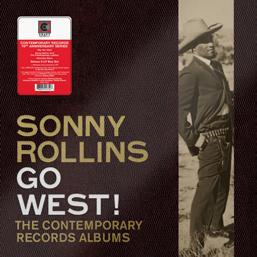
on vibes for “You.” The other songs on this recording are “I’ve Told Every Little Star,” “Rock-A-Bye Your Baby with a Dixie Melody,” “How High the Moon,” “I’ve Found a New Baby,” “Alone Together,” “In the Chapel in the Moonlight” and “The Song Is You.” These albums are collected along with a third disk of alternate takes of six selections in a three-disk box set titled Go West!!: The Con-
temporary Records Albums (Craft Recordings—435), also available on a three-LP set. As you would expect from the musicians participating, the music is consistently sublime. Rollins, is, of course, the central figure, and his singular genius shines through on every track. This is classic jazz at its best! CraftRecordings.com
One of the great contributions by New Jersey to the world of jazz is the existence of the Jazz Studies program at William Paterson University. The staff includes an impressive roster of jazz stars, while the program has produced many graduates who have become notable professional jazz players. One such graduate is saxophonist Anthony E. Nelson Jr. who demonstrates on Swinging Sunset (Musicstand Records) a pleasant way with ballads and the ability to swing out when necessary—all while
38 JULY/AUGUST 2023 JERSEY JAZZ NJJS.ORG
OTHER VIEWS
maintaining a tone that references earlier influences like Ben Webster, Stan Getz and Zoot Sims rather than the harshness that has evolved in many younger tenor players who bow before the altar of Coltrane. His program of a dozen selections includes standards such as “Canadian Sunset,” “Girl Talk,” “These Foolish Things,” “Why Did I Choose You”, and “Three Little Words;” a few jazz tunes, Stanley Turrentine’s “Minor Chant,” Johnny Griffin’s “Mildew” and Tadd Dameron’s “On a Misty Night;” a gospel favorite, “Walk with Me;” plus three of his originals. He performs these in partnership with Kyle Koehler on organ and Cecil Brooks III on drums. AnthonyNelsonJazz.com
The Mike Jones Trio, finds pianist Mike Jones in the company of bassist Penn Jillette—yes that Penn Jillette of Penn & Teller fame—and
drummer Jeff Hamilton for the 11 tracks that can be found on You Three Guys (Capri -74169). Jones is one of those mainstream jazz pianists who seems to have swing flowing naturally through his system, no matter the tempo he is addressing. The songs are mostly standards such as “’S Wonderful,” “Watch What Happens,” “You’ve Changed”, and a nice medley of “I’ll Close My Eyes and “Close Your Eyes.” They wrap things up with a nifty Jones original, “Blues for Burns.” Jillette proves to be more than just adequate on the bass, while Hamilton shows why he is considered among the elite of jazz drummers. You Three Guys is a fine example of what make the piano trio format such a jazz mainstay. CapriRecords.com)
The title of You Are the Song (Justin Time -281) captures what occurred when Pilc Moutin Hoenig—pianist
Jean-Michel Pilc, bassist François Moutin, and drummer Ari Hoenig— went into the studio for three hours and simply played songs that were chosen spontaneously. The 10 selections that made the album are all first takes. These gentlemen approach their music as if they were having a conversation, letting the notes flow as words would were they speaking among themselves. Once the melody is stated, the imaginative improvisations pour forth, often in surprising directions, but always in ways that are coherent and demand your attention. Whether exploring jazz tunes like “Impressions,” “Straight No Chaser” or “Bemsha Swing,” hitting on standards such as “The Song Is You,” “After You’ve Gone” “Alice in Wonderland” or “My Romance,” the trio forcefully, but naturally, plays as if there was one mind spread over three bodies. The magical spontaneity on display here
is a fine example of what makes jazz such a special music. JustInTime.com
Pianist Joe Alterman has had a strong personal relationship with the popular jazz pianist Les McCann since they met at the Blue Note in New York City more a decade ago. Through the years, Alterman, who lives in Atlanta, and McCann, who lives in Los Angeles, are in almost daily contact. McCann’s
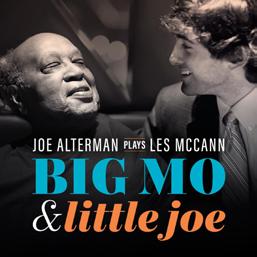
39 JULY/AUGUST 2023 JERSEY JAZZ NJJS.ORG
OTHER VIEWS
music has had a major influence on the younger player, and Joe Alterman Plays Les McCann: Big Mo & Little Joe (self-produced) is Alterman’s musical thank you to his friend. Alterman has chosen 11 tunes from McCann’s catalog, songs that are taken from all phases of McCann’s varied career, and has placed his own perspective on each of them. What shines through on the album is the strong blues influence that is inherent in McCann’s music. Alterman even takes some of the tunes from McCann’s later electric period and found an acoustic approach that gives them fresh life. The result is a bluesy, funky tribute to a major player on the jazz scene for over 50 years that is played by one of the brightest young piano stars of the current scene. JoeAltermanMusic.com
It is a simple fact of jazz evolution that the influence of Bill Evans on
most pianists who followed him was multifaceted. His unique approach to harmony initially set him apart, but the way in which his trios were more than just a pianist with a rhythm section, rather an organic unit, became a standard to which many subsequent piano trios aspired. This is evident in the playing of pianist Noah Haidu, bassists Buster Williams or Peter Washington and drummer Lewis Nash on Standards (Sunnyside—1705). Six of the selections are in the trio format, “Old Folks,” “Just in Time,” “Beautiful Friendship,” “All the Way,” “Someday My Prince Will Come”, and “I Thought About You.” Saxophonist Steve Wilson joins in on “You and the Night and the Music” and Wayne Shorter’s “Ana Maria.” “Last Dance I” and Last Dance II” is a two-part rumination on a contemplative original by Haidu, with Wilson present on the second part. The oth-
er track is a thoughtful solo take on “Skylark” by Haidu. N oahHaicu.com
When one thinks of 98-year-old Terry Gibbs, the image is of the super-hip vibraphone player who recorded in seven decades as a leader of small groups and big bands as well as on countless recordings as a sideman, most memorably on the Woody Herman band in the late 1940s. One as-
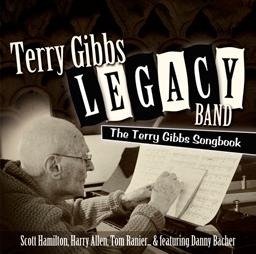
pect of his talent that has been mostly overlooked is his aptitude for creating engaging original melodies. On The Terry Gibbs Songbook (Whaling City Sound 134), the Terry Gibbs Legacy Band led by his son, drummer Gerry Gibbs, performs 15 Terry Gibbs songs with lyrics by a variety of partners, including Michael Dees, Bobby Troup, Arthur Hamilton, Steve Allen, and Jerry Gladstone. The other players are Scott Hamilton and Harry Allen on tenor saxes, Tom Ranier on piano and tenor sax, Mike Gurrola on bass, and Danny Bacher on vocals, an impressive lineup indeed. While the songs will be unfamiliar, they quickly feel like old friends thanks to the fine arrangements by Ranier and the excellent musicianship evident throughout the program. Having a front line of Hamilton and Allen, two mainstream tenor players who are at the top of anyone’s list, assures that
40 JULY/AUGUST 2023 JERSEY JAZZ NJJS.ORG
OTHER VIEWS
this will be a special recording. Bacher has a nice feeling for lyrics and a jazz sensitivity that is natural given his experience as a fine saxophonist. The album conveys the joy that has always been present in the music of Terry Gibbs. W halingCitySound.com
Bassist Leon Lee Dorsey leads a spirited trio with drummer Mike Clark and guitarist Russell Malone on Cantaloupe Island ((Jazz Avenue 1), a nine-tune album that leans heavily on jazz compositions, such as Herbie Hancock’s “Cantaloupe Island,” Horace Silver’s “Barbara” and “Sister Sadie, Wes Montgomery’s “Bumpin’ on Sunset” and “The Thumb,” and Kenny Burrell’s “Listen to the Dawn.” There are also two standards, “The Very Thought of You” and “That’s All”, plus “Thieves in the Temple” by Prince. Malone is out front playing
his always scintillating lines and demonstrating his chordal astuteness with Dorsey’s bass emphatically there while Clark is a drummer who adds perfectly complementary accents. The music is welcoming and spirit lifting. LeonLeeDorsey.com
Tenor saxophonist Harry Allen puts a special touch on not only his exceptional playing, but also on his always sophisticated, yet accessible arrangements. Both talents are in constant evidence on his latest recording, With Roses (Triangle 7). This album comprises 10 songs composed or jointly composed by Roger Frankham. Allen, pianist John di Martino, and bassist Mike Karn are present on all 10 tracks, while on five tracks they are joined by Warren Vaché, and Freddie Hendrix on trumpets, John Allred on trombone, Grant Stewart on tenor sax
and Aaron Kimmel on drums. The other five have Peter and Will Anderson on clarinets, Dan Block on bass clarinet, Steve Kenyon and Kathleen Nester on flutes, and Bryan Carter on drums. Vocalist Lucy Yeghiazaryan adds her voice to nine of the 10 selections. Five of the lyrics were supplied by Frankham, while Bruce Brown wrote two others, and one each had words by Roger Schore and Mark Winkler. No matter the source of the words, Yeghiazaryan sings them with just the kind of style and understanding that is the norm for someone who has established herself as one of the finest young vocal talents on the current scene. Allen came through with marvelous arrangements and selected an exemplary gathering of musicians to create an album that will become a favorite on your personal playlist. Amazon.com
Anne Burnell and Mark Burnell form an impressive musical partnership with Anne handling most of the vocal responsibilities, although Mark does add an occasional vocal in addition to his steady presence on the piano. They have support from Joshua Ramos on bass and Jim Widlowski on drums, with guitar contributions from Henry Johnson on five tracks and Paulinho Garcia on one. The 14 tracks include mostly standards like “Baubles, Bangles and Beads,” “How Long Has This Been Going On,” “Let’s Fall in Love” “Getting to Know You” and a medley of “The First Time Ever I Saw Your Face” and ‘I’ve Grown Accustomed to Her Face.” Their ballad take on “If I Only Had a Brain” is a departure from the approach normally taken to this tune. Anne contributed two originals, “Another Chorus
NJJS.ORG 41 JUNE 2023 JERSEY JAZZ
OTHER VIEWS
of the Blues” and “Peppermint Tea,” while Mark penned “Looking for the Gold.” This is their first duo vocal album in over 20 years. What took them so long?” BurnellMusic.com
On The London Session and To Edinburgh and Back (self-produced), Andrea Carlson , who usually accompanies herself on guitar, has assumed the role of strictly being a vocalist on these two albums. She has backing from an English quartet of Duncan Hemstock on reeds, Alex Bryson on piano, Eleazar Ruiz on bass, and Mark Hale on drums on the first of the two where she sings “A Foggy Day,” “Stars Fell on Alabama,” “Little Jazz Bird,” “La Javanaise,” “Sweet Lorraine”, and “Tea for Two.” For the latter album she recorded seven songs in Edinburgh with Campbell Normand on piano, Jerry Ferde on
bass, and David Bopdrummer on drums, then overdubbed a variety of additional musicians back in Philadelphia, including three tracks, “I’m Old Fashioned,” “Aren’t You Glad You’re You” and “It Might as Well Be Spring,” featuring the peerless tenor saxophonist Larry McKenna. The other selections are “You Turned the Tables on Me,” “Too Marvelous for Words,” “It’s De-Lovely,” “My Baby Just Cares for Me”, and “Poor Butterfly.” AndreaCarlsonMusic.com
Vocalist Tatiana Eva-Marie has established herself as a strong presence on the New York City jazz scene as the lead singer of the Avalon Jazz Band and as a solo performer. Two at the Most (Turtle Bay Records -23) finds her in a duo setting with pianist Jeremy Corren for a program of eight standards, “The End of a Love Affair,”
“Penthouse Serenade,” “Fly Me to the Moon,” “Sophisticated Lady,” “I Got It Bad (and That Ain’t Good),” “You Go to My Head,” “The Nearness of You” and “You Are Too Beautiful.” She has an assured and welcoming vocal style with a voice that lies easily on your ears. Corren is wonderfully supportive. He is a fan who has given her advice on songs she should consider performing. He’s also a classics professor who happens to have a decent voice and a nice way with a lyric; so, in appreciation for all of his support, she offered him an opportunity to perform a couple of tunes on the album. He did so effectively on “They’ll Never Believe Me” and “I’ve Grown Accustomed to Her Face.” Eva-Marie will be appearing on July 7 and 8 at the Jazz Arts Project’s Summer Jazz Café, held at the Two River Theater in Red Bank, NJ. TurtleBayRecords.com


SANDY SASSO ’S SWINGIN’ BIG BAND
JULY 23rd. 6:00-7:30 Spring Lake Park, South Plainfield
Bring chairs and Libations! rd. 23 -3:30
August 23rd. 2:00-3:30 Thompson Park, Jamesburg
NJJS.ORG 42 JULY/AUGUST 2023 JERSEY JAZZ
Astrud Gilberto: Her Vocal on ‘The Girl From Ipanema’ Became a Huge Hit and Created a Jazz Classic
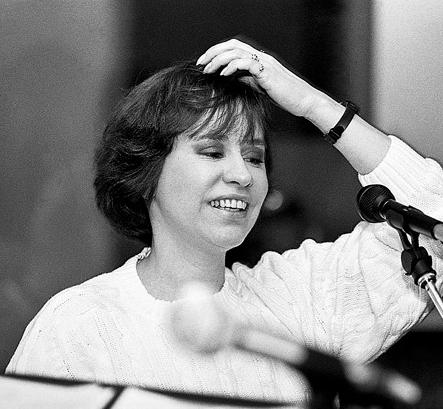
When Verve Records reissued its 1964 album, Getz/Gilberto, featuring tenor saxophonist Stan Getz and guitarist Joao Gilberto, in 1986, AllMusic’s Steve Huey pointed out that the album “made bossa nova a permanent part of the jazz landscape, with one of the biggest smash hit singles in jazz history—‘The Girl From Ipanema’.” The Antonio Carlos Jobim classic was sung by Joao Gilberto’s wife, Astrud Gilberto, who had never performed outside of her own home prior to the recording session.
Astrud Gilberto died June 5, 2023, in Philadelphia at the age of 83. The Washington Post’s Brian Murphy, writing the day after Gilberto’s death, recalled that Creed Taylor, the producer, “suggested adding some verses in English to broaden the song’s international appeal. Ms. Gilberto knew enough English and was invited to the recording studio.”
In a 2002 interview posted on
her website, she said, “Joao casually asked me to join in and sing a chorus in English, after he had just sung the first chorus in Portuguese, so, I did just that.” The English words were: Tall and tan and young and lovely/The girl from Ipanema goes walking/And when she passes/Each one she passes goes ‘Ah’.
According to Murphy, “The song on the album was five minutes, 15 seconds—too long for AM radio play at the time. Taylor edited out the Portuguese lyrics bringing the song down to 3:55, and it was released as a single. The song peaked at Number 5 on the Billboard Hot 100 chart in July 1964, won a Grammy Award in 1965 as a record of the year, and eventually sold more than five million copies worldwide.”
Astrud Gilberto was born Astrud Evangelina Weinert on March 29, 1940, in the Brazilian state of Bahia. Her mother was Brazilian, and her father was German, a teacher of lan-
43 JULY/AUGUST 2023 JERSEY JAZZ
BIG BAND IN THE SKY
BIG BAND IN THE SKY
guages and literature who named his three daughters after goddesses of German mythology—Astrud, Eda, and Iduna. When Astrud was eight, the family moved to an ocean-front home in Rio de Janeiro.
Joao and Astrud were divorced shortly after the Getz/Gilberto recording, but her career was just starting. She toured with Getz and appeared on his 1964 live Verve album, Getz Au Go Go. In 1965, she released her own first solo Verve record, The Astrud Gilberto Album. It contained songs in English and Portuguese. She also recorded a Verve album released in 1966 with arrangements by Gil Evans and Al Cohn. Called Look to the Rainbow, it included Johnny Coles on trumpet, Bob Brookmeyer on valve trombone, Kenny Burrell on guitar, and Grady Tate on drums. In 1966, she worked with Quincy Jones on the soundtrack of the movie, The Deadly Affair, directed by Sidney Lumet and starring James Mason and Maxmillian Schell. She also appeared in several television commercials and was the voice of Eastern Airlines.
Gilberto began writing her own songs in the 1970s, and her 1977 Image Records album, That Girl From Ipanema, included a duet with Chet Baker on one of her songs, “Far Away”. In the early ‘80s, she created a band with her son, Marcelo, playing bass.
They toured North America, Europe, and Asia. Her other son, guitarist Gregory Lasorsa, played with her on the song, “Beautiful You”, on her 1997 Canyon International album, Temperance. In 1996, she performed a duet with singer George Michael on the bossa nova song, “Desafinado” for Red Hot + Rio, a charity album to promote AIDS awareness.
In July 1989, the Los Angeles Times’ Don Heckman reviewed her performance at Hollywood’s Catalina Bar and Grill. “Her wispy, almost expressionless voice,” he wrote, “drifted across the music’s sensual, samba-based rhythms with the innocence of a child’s balloon floating on a summer zephyr. She sang with perhaps more focus and strength than was present in her early years. But the vulnerability and sense of naivete were the same. Like Chet Baker’s vocals, Gilberto’s interpretations were affecting less for their musicality than for their sense of one-on-one intimacy—the feeling of hearing a lover whisper a soft and tender song.”
In 2002, Gilberto was inducted into the Latin Music Hall of Fame, and in 2008, she received a lifetime achievement Grammy from the Latin Recording Academy.
She is survived by her sons, Marcelo and
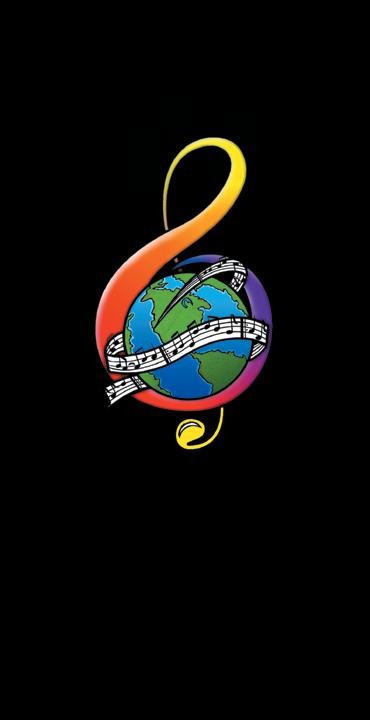
NJJS.ORG 44 JULY/AUGUST 2023 JERSEY JAZZ
Gregory. JAZZPROMOSERV ICES.COM WE GET THE WORD OUT J i m E i g o J a z z P r o m o S e r v i c e s 2 7 2 S t a t e R o u t e 9 4 S o u t h # 1 Wa r w i c k , N Y 1 0 9 9 0 O f f i c e : 8 4 5 - 9 8 6 - 1 6 7 7 C e l l / Te x t : 9 1 7 - 7 5 5 - 8 9 6 0 S ky p e : j a z z p r o m o j i m @ j a z z p r o m o s e r v i c e s . c o m S P E C I A L I Z I N G I N M E D I A C A M PA I G N S F O R A RT I S T S , L A B E L S , V E N U E S A N D E V E N T S • NEW RELEASES • IMPORTANT ANNOUNCEMENTS • UPCOMING PERFORMANCES AND TOURS
E-MAIL MARKETING
PRESS CAMPAIGNS • RADIO MAILINGS eigo_jps_4.5x9ad_newjerseyjazzsociety_february2022_Layout 1 1/25/22 5:23 PM Page 1
•
•
Max Morath:
An Advocate for Ragtime in the Modern Era
More than 40 years after it stopped being America’s popular music, pianist Max Morath revived ragtime. Morath, who died June 19, 2023, in Duluth, MN, at the age of 96, wrote and produced a series of 12 half-hour programs in 1960 called The Ragtime Era for KRMA-TV, the educational television station in Denver. It was picked up by the 60-station National Educational Television network, the forerunner of the Public Broadcasting System. The series also attracted the attention of commercial TV stations, which increased Morath’s audience, and according to The New York Times’ Robert D. McFadden (June 23, 2023), “He was soon juggling re-
cording dates, college gigs (some 50 a year), and concert and club bookings.”
Reviewing the series for The Times, Jack Gould wrote: “In an uncommon mixture of earthiness, emphasized by his chewing of a big cigar and wearing of loud vests, and erudition, reflected in his knowledgeable commentary on music and the social forces that influence its expression, he presides over a wonderful rag piano and lets go.”
A second series created by Morath for NET and commercial TV syndication in 1962, The Turn of the Century, was also a huge sensation. It had a broader focus – describing life in the United States from 1890 to the 1920s. In addition to television success, the series turned into a oneman theatrical show, presented by Morath at New York’s Blue Angel, the Village Vanguard, and the Off-Broadway Jan Hus Playhouse. It also toured nationally for several years.
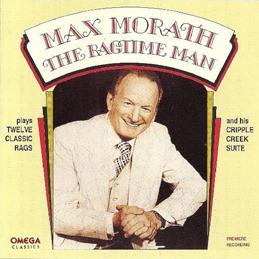
When The Turn of the Century opened at Washington, DC’s Ford Theater in 1970, The Washington Post described the period covered by Morath as “a time of sweeping changes in the moral climate of our nation, and Morath uses popular music, chiefly ragtime, as the centrifugal force for sorting out the different phases.” The popularity of ragtime was also helped by the 1973 release of the movie, The Sting, starring Paul Newman and Robert Redford and featuring Scott Joplin’s music; and by the recording of Joplin’s work on the Nonesuch label in 1971 by musicologist Joshua
Rifkin. Morath appeared on several TV and radio programs including The Bell Telephone Hour, The Today Show, and the Kraft Music Hall.
Born in Colorado Springs, CO, on October 1, 1926, Morath got a job with local radio station, KVOR (Voice of the Rockies) when he was a senior in high school. After he graduated, he played piano and worked as a newscaster for the station to help finance his education at Colorado College.
As a pianist, Morath made more than 30 albums. In 2016, he was inducted into the Colorado Music Hall of Fame, along with bandleaders Paul Whiteman and Glenn Miller. “Of course, they’re both Colorado boys,” he said. “I felt I was in good company.”
He is survived by his wife, Diane Fay Skomars; two daughters, Kathryn Morath and Christy Mainthow; a son, Frederic; a stepdaughter, Monette Fay Magrath; five grandchildren; and a great-grandson.
45 JULY/AUGUST 2023 JERSEY JAZZ NJJS.ORG
BIG BAND IN THE SKY
George Winston, the ‘New Age’ pianist who died June 4, 2023, in Williamsport, PA, at the age of 74, was known for music that was delicate and mystical, but his career as a keyboardist was inspired by a rock group, the Doors. When the Doors released its debut album on Elektra Records in January 1967, it had a riveting effect on the 18-year-old Winston. Having discontinued piano lessons, he decided to take up the organ after hearing the playing of the band’s organist, Ray Manzarek. In a 2004 interview, Winston said, “When I heard the first song on Side One, ‘Break On Through (to the Other Side)’, to me it was greatest piece of music I’d ever heard.” He attended Stetson University
in DeLand, FL, and became part of a group called the Tapioca Ballroom Band. But he switched back to piano in 1971 after hearing some Fats Waller recordings from the 1920s and ‘30s. His first album, Ballads and Blues, was released on the Takoma label in 1972. But it wasn’t until eight years later when he released Autumn on the Windham Hill label that his career took off. Michael J. West, writing on the National Public Radio website, three days after Winston’s death, said Autumn “and its follow-ups, 1982’s Winter into Spring and December, all platinum-selling releases, are considered cornerstones of his career.”
His 1994 album, Forest, won a Grammy Award for best New Age album. Winston preferred the term, “folk piano” to New Age, describing it on his website as “melodic and not complicated in its approach, like folk guitar picking and folk songs, and it has a rural sensibility.”
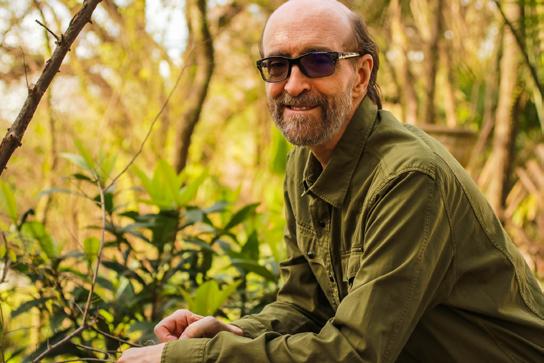
Winston released more than 15 albums over a 50-year career. His music, wrote The Washington Post’s Brian Murphy, was, “an ethereal and mood-heavy genre that brought up associations with meditation and spirituality.” DownBeat’s Lee Underwood wrote that Winston attuned his emotions “to the serenity, order, and power of nature rather than to the violently frenetic tones of our contemporary cityscape ... a perfect aural and psychological antidote to the urban madness.”
He studied New Orleans pianists, James Booker, Henry Butler, and Professor Longhair and recorded two albums of music by Vince Guaraldi, the jazz pianist who composed music for the animated Peanuts TV specials. His last album, Night, was released by RCA Records in 2022. It included Leonard Cohen’s “Hallelujah”, Allen Toussaint’s “Freedom for the Stallion”, and Laura Nyro’s “He’s a Runner”.
Winston is survived by his sister, Nancy Winston Kahumoku, and a niece and nephew.
46 JULY/AUGUST 2023 JERSEY JAZZ NJJS.ORG
BIG BAND IN THE SKY
George Winston
Peaceful, Meditative ‘Folk Piano’
BIG BAND IN THE SKY
Remembering Jackie Williams
BY RICK BOGART
Drummer Jackie Williams died recently at the age of 90. Born in Harlem in 1933, Williams is probably best known for his long association with trumpeter Doc Cheatham. In recent years, he played with the Harlem Blues & Jazz Band and in the Jazz Foundation of America’s Jazz in the Schools program.
Clarinetist Rick Bogart met Williams in the early 1980s and remained a close friend. Here are some personal memories of their time together. When I first came to New York, I auditioned for Harrah’s Atrium Lounge in Atlantic City with Jackie
Williams, (trombonist/pianist) Bobby Pratt, and (bassist) Bob Field. We got the job right on the spot—eight weeks and another 16 that year. They stayed with me until they qualified for unemployment and then went back to New York. Every time I saw Jackie, I thanked him 100 times.
Jackie and I first met at the Theatrical in Cleveland where he was playing with (pianist) Red Richards. We worked together on and off for many years from that time on. We always kept in contact, lived close to one another, and, occasionally had lunch together.
During the early ‘80s, we worked a number of jobs for the family of The Shah of Iran. It was a very good job. One New Year’s Eve, we were playing at the family’s townhouse in the East 20s. Warren Chiasson was on vibes, Morris Edwards on bass, and Jackie on drums. We were

on the second floor, and the party was on the first floor, so we had a nice spot, and everything was going good. There was an armed guard there with us, with a pistol sticking out of his belt, as threats to the Shah family were very high. At one point, the guard went down to his car and brought his Les Paul jazz guitar and
played a couple of songs with us.
Next, the Shah’s son came up and announced he was going to play the drums. He took off his gold Rolex watch and put it on the floor next to the bass drum pedal. After he finished playing, everybody congratulated him, and he was so excited he left the watch by the drum pedal. Jackie would not go near the drums, and he wouldn’t play until that watch was removed. So, I took it back to the Shah’s son, and we continued. We played a number of jobs for the family, but Jackie said he didn’t want that job anymore because he didn’t like a guy with a pistol standing behind him.
Jackie was truly a special and unique person—he made his living playing the drums with wonderful high profile jazz artists—such as Illinois Jacquet, Jay McShann, and Junior Mance— all his life. A born talent, a natural talent and a humble caring human being.
47 JULY/AUGUST 2023 JERSEY JAZZ NJJS.ORG
PHOTO FROM ED BERGER PHOTOGRAPHIC COLLECTION @ OBERLIN CONSERVATORY LIBRARY















































